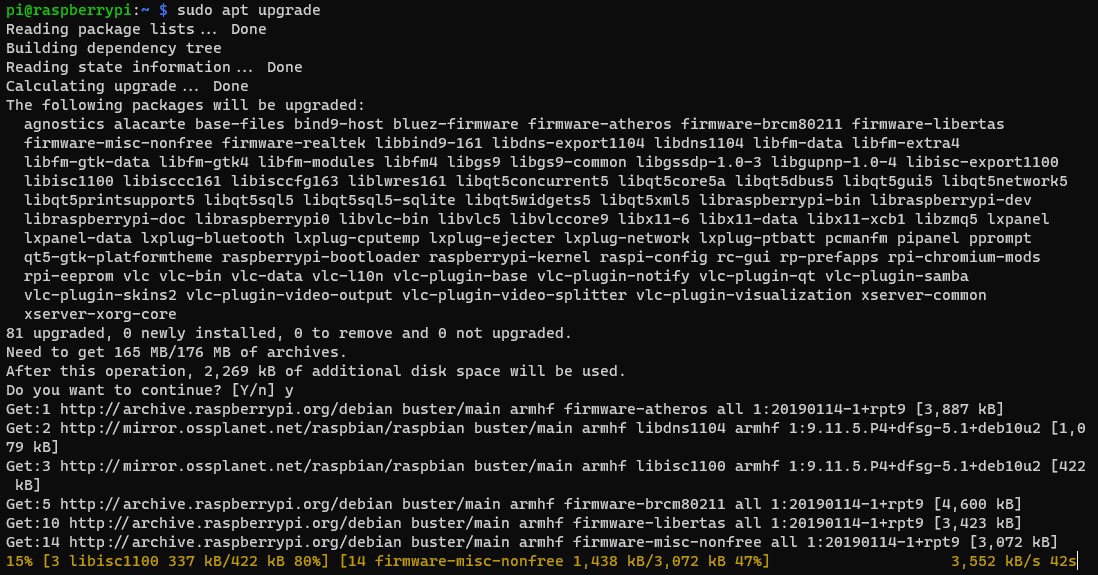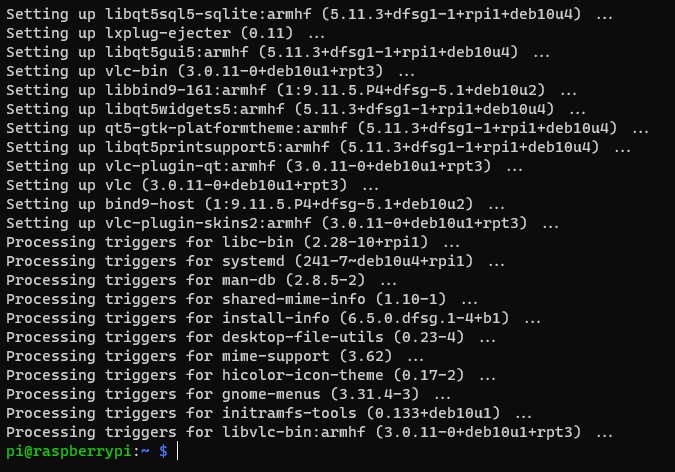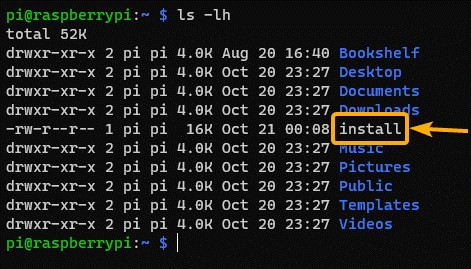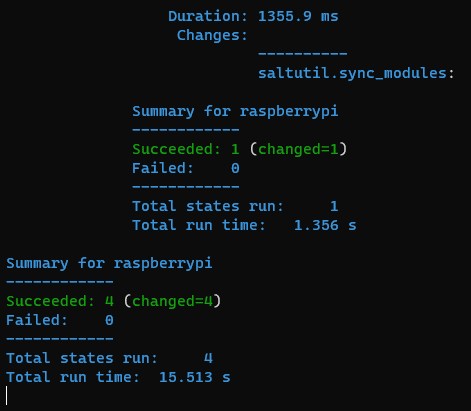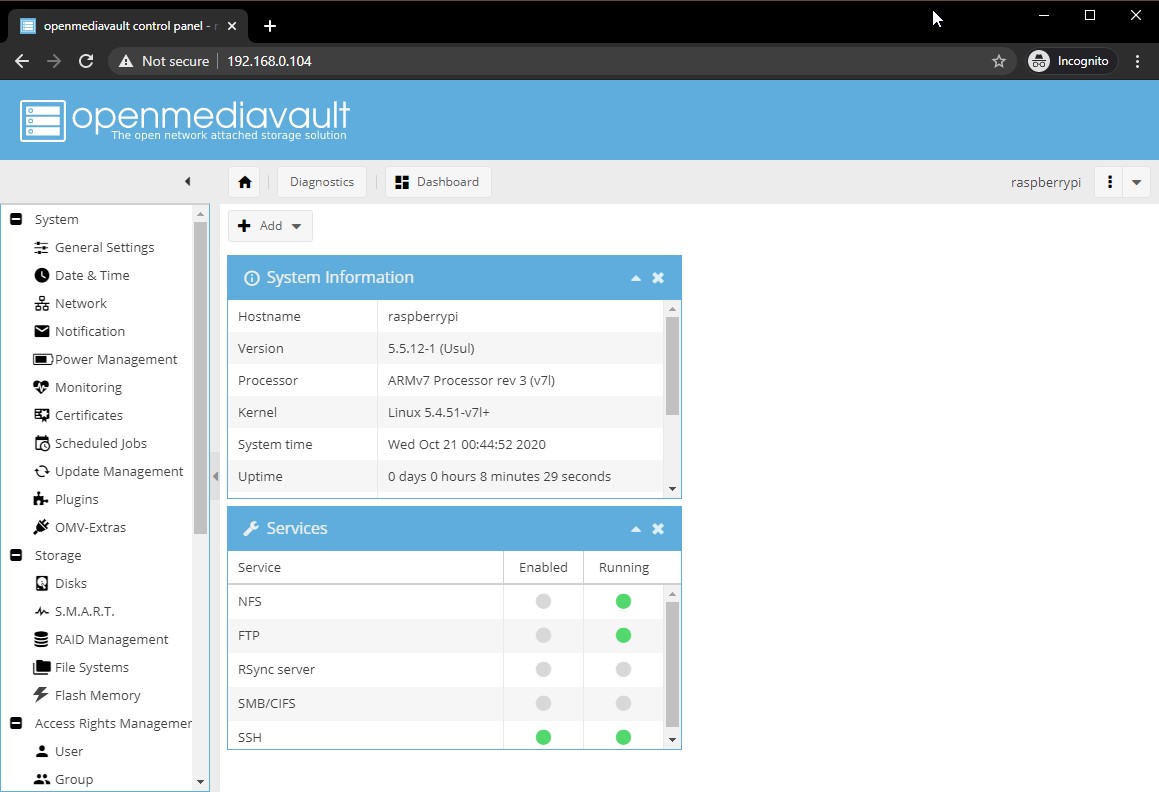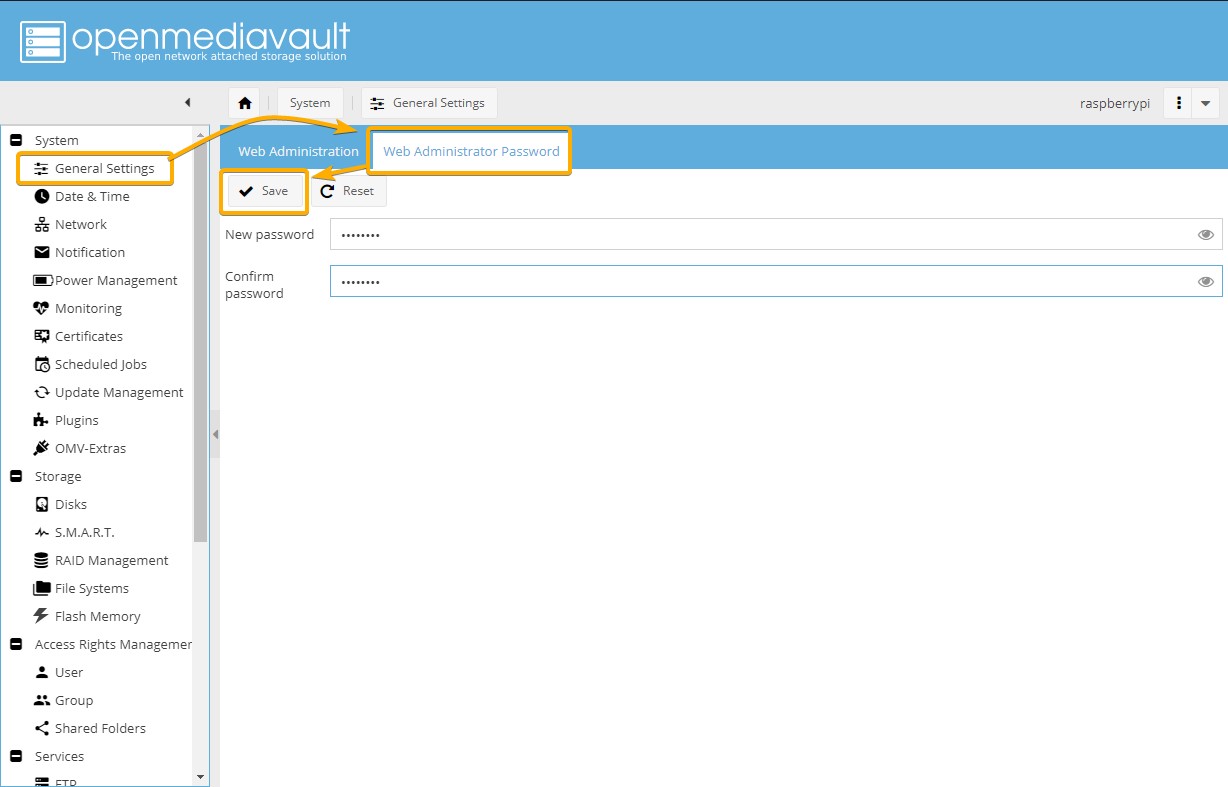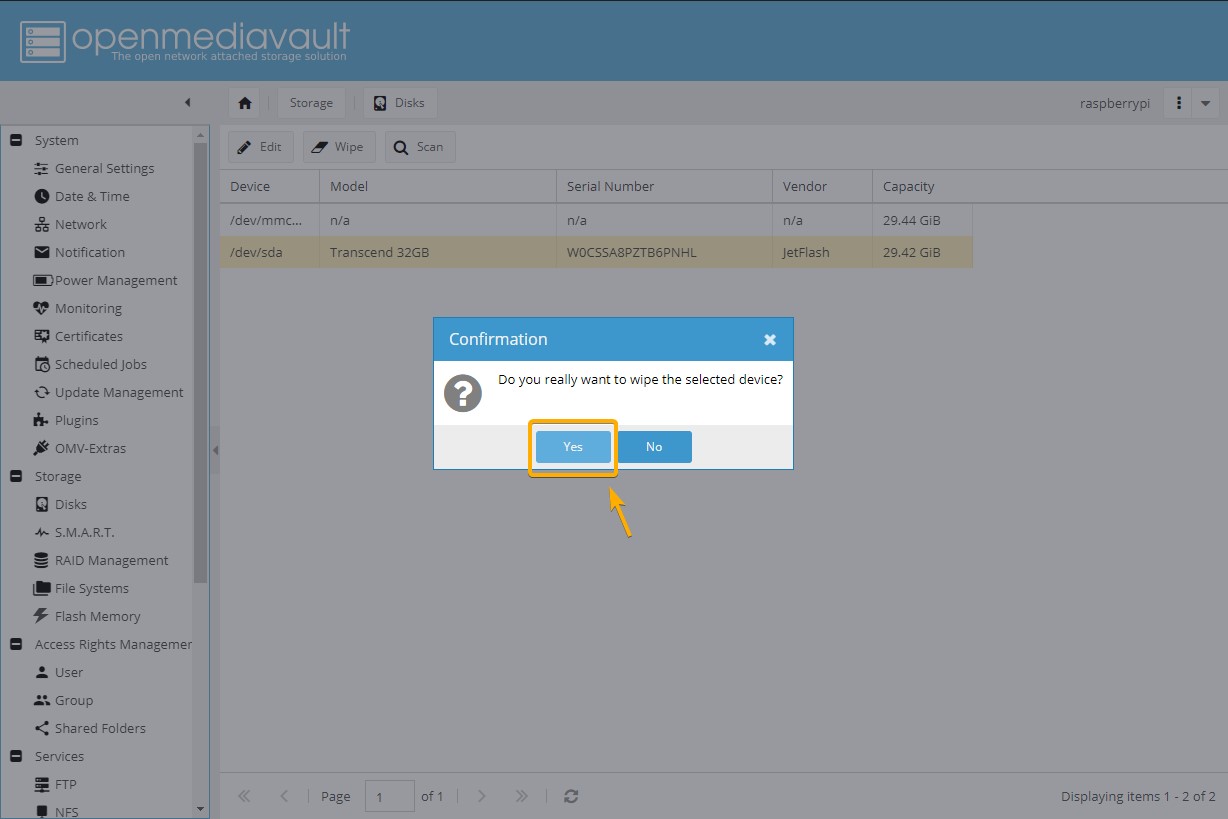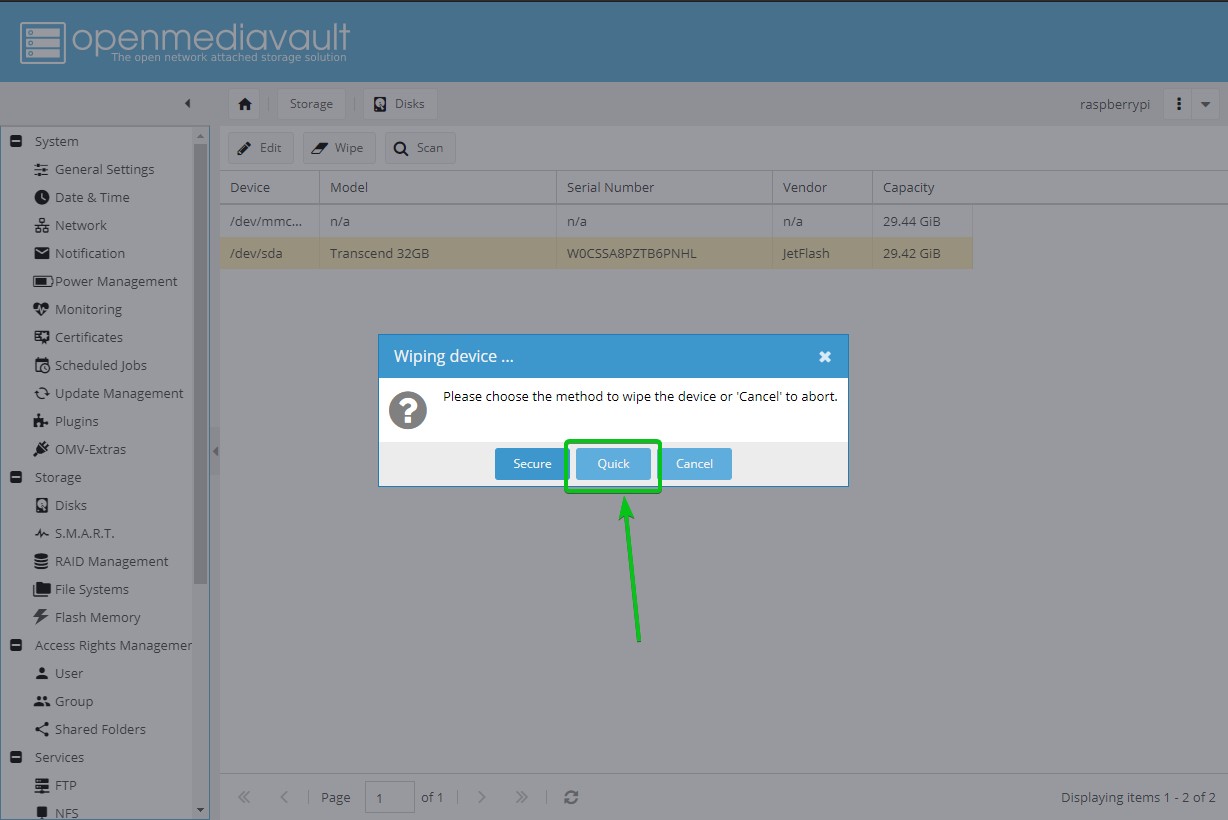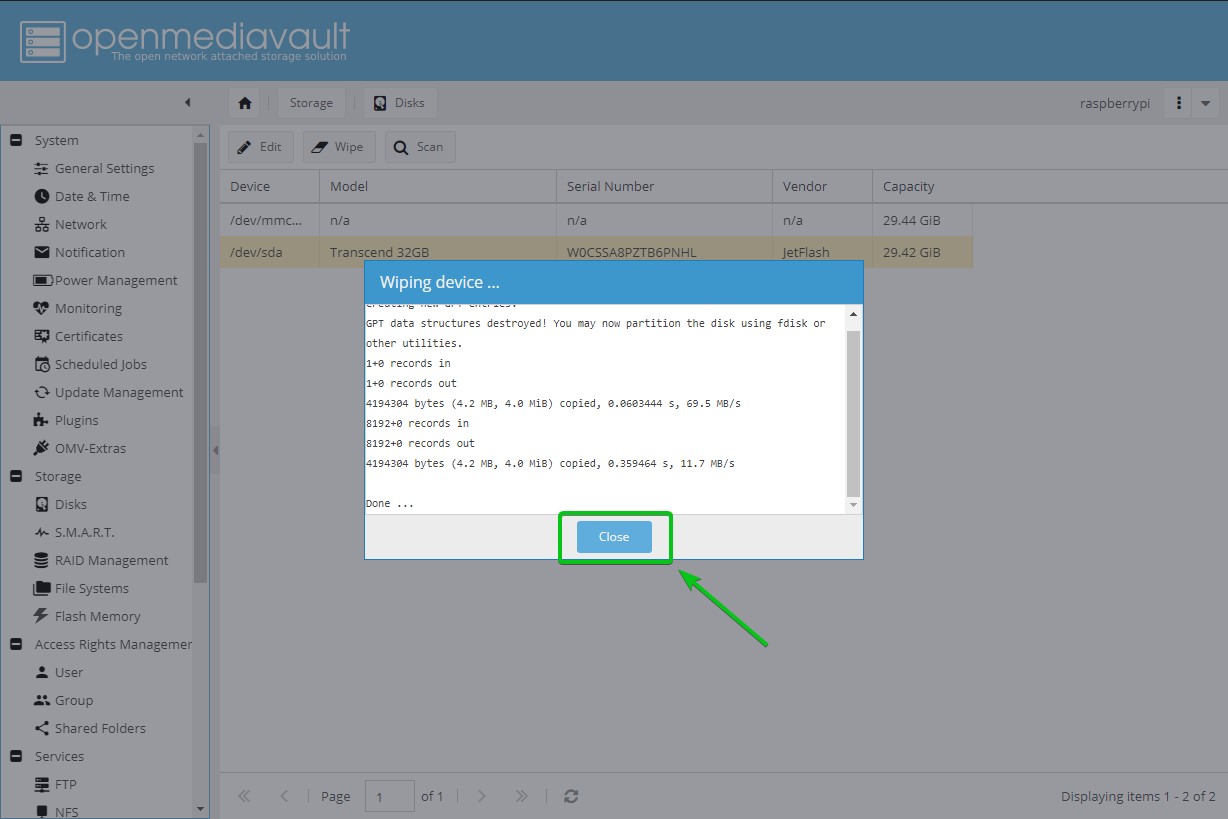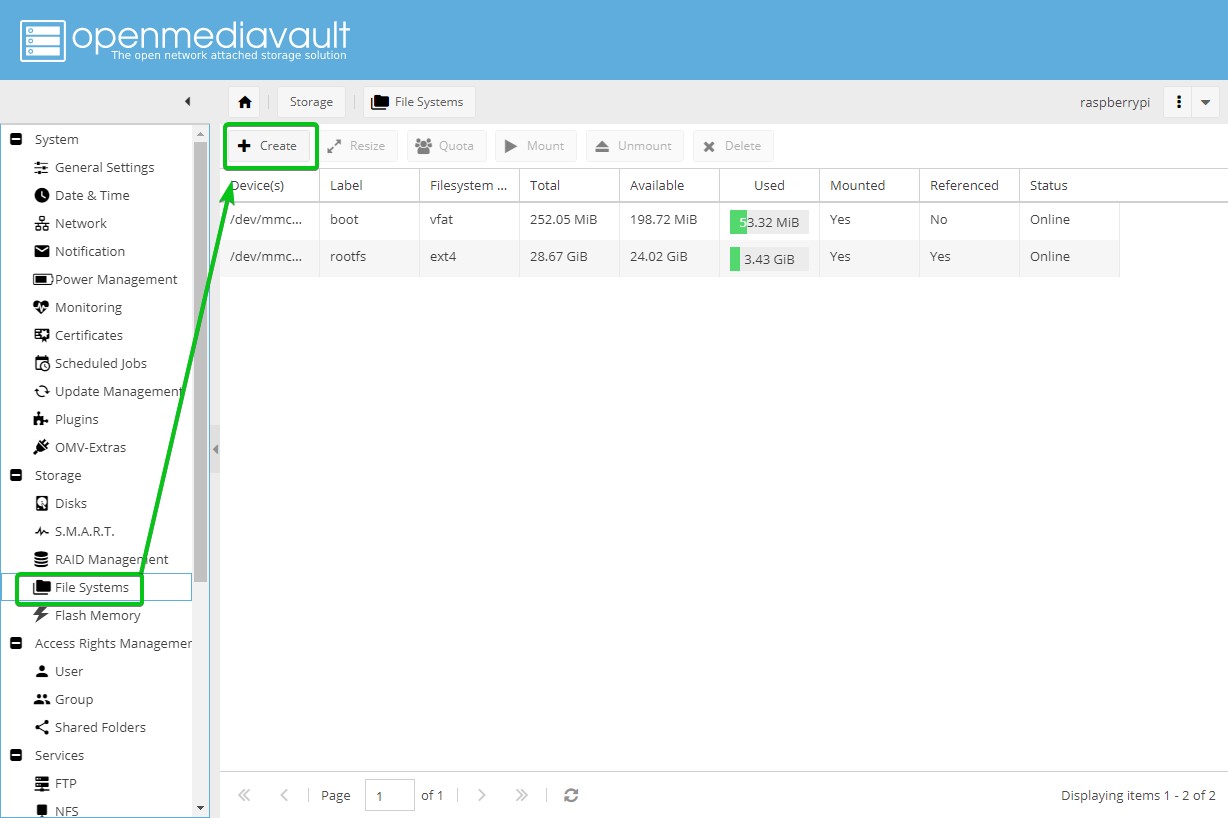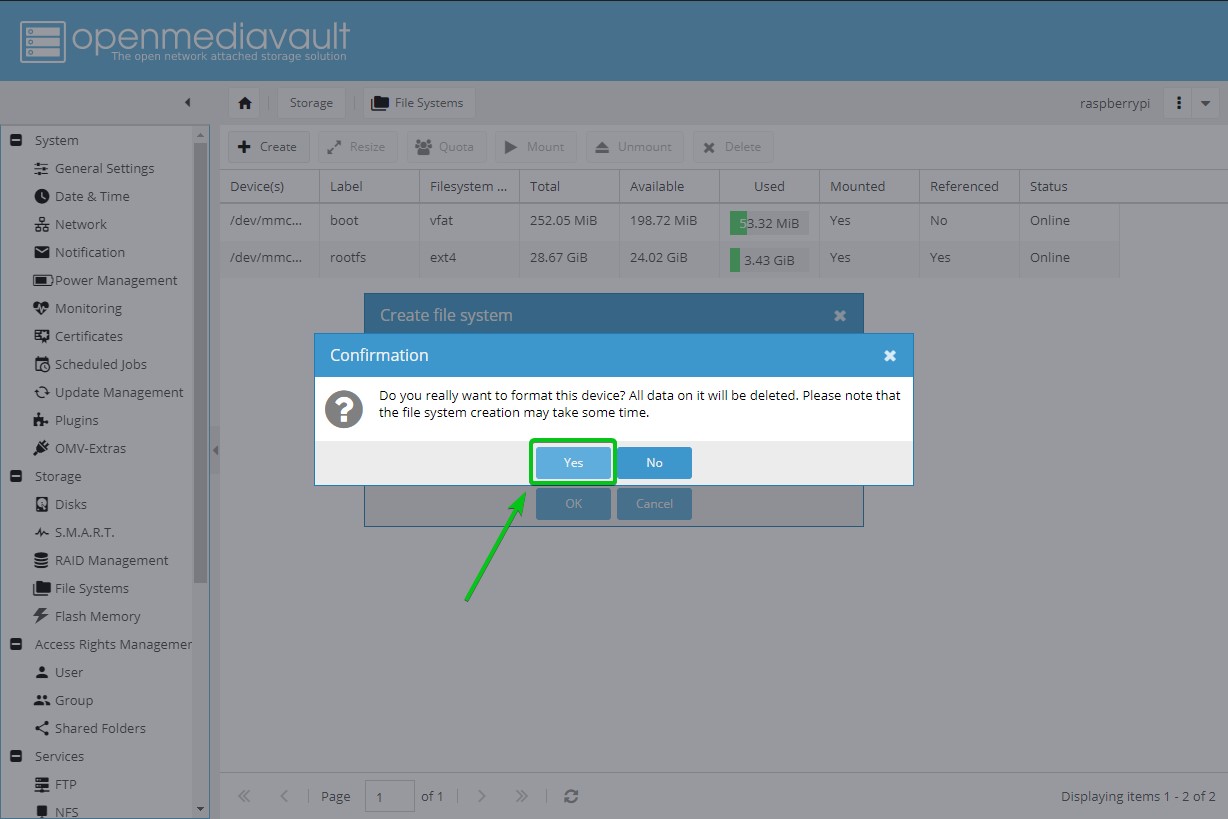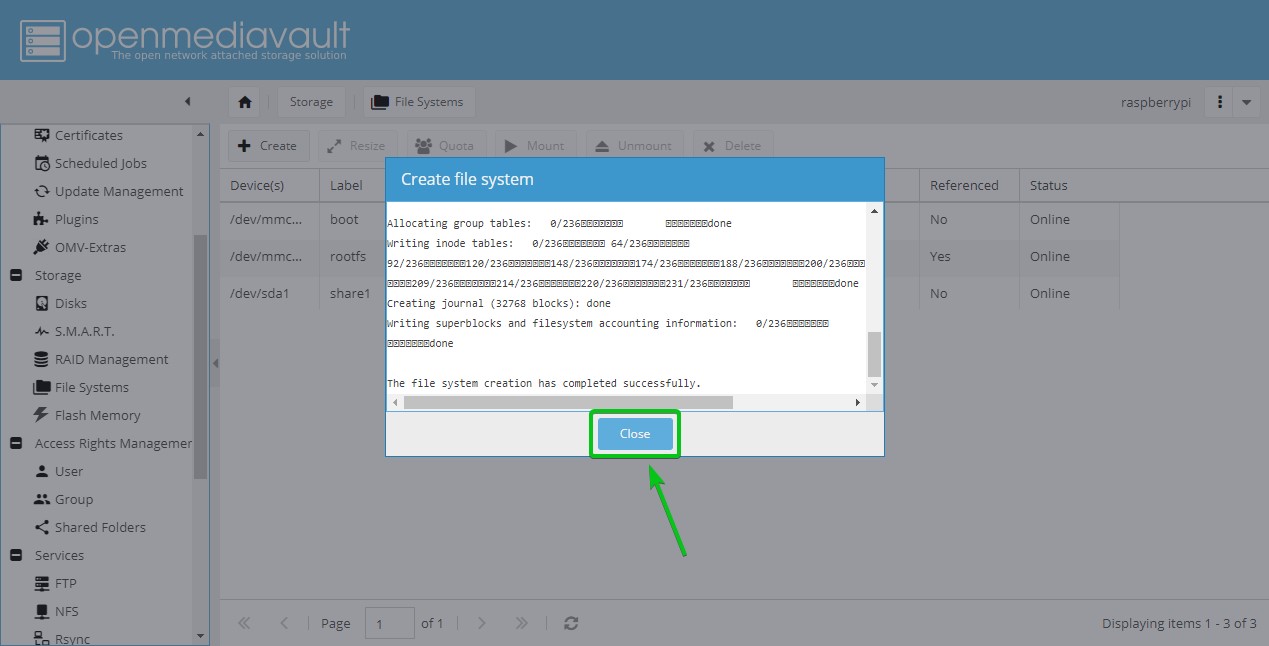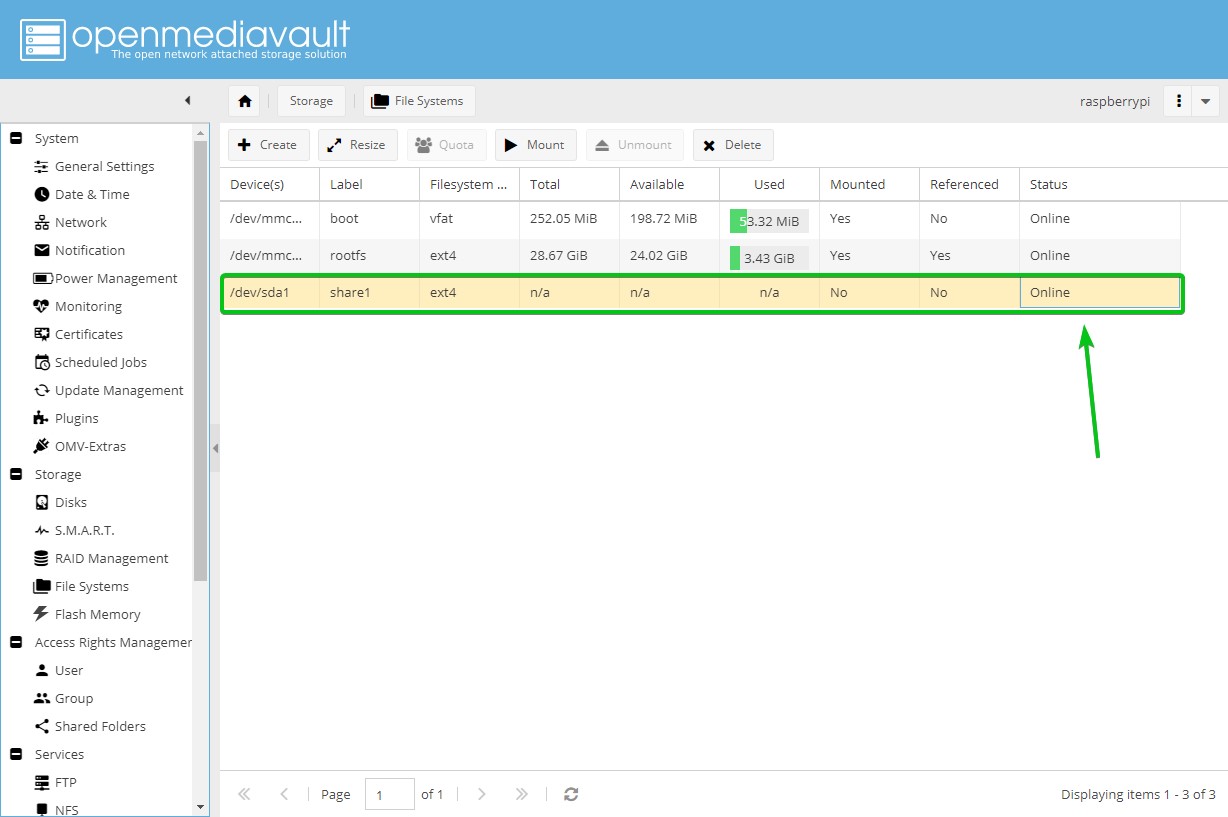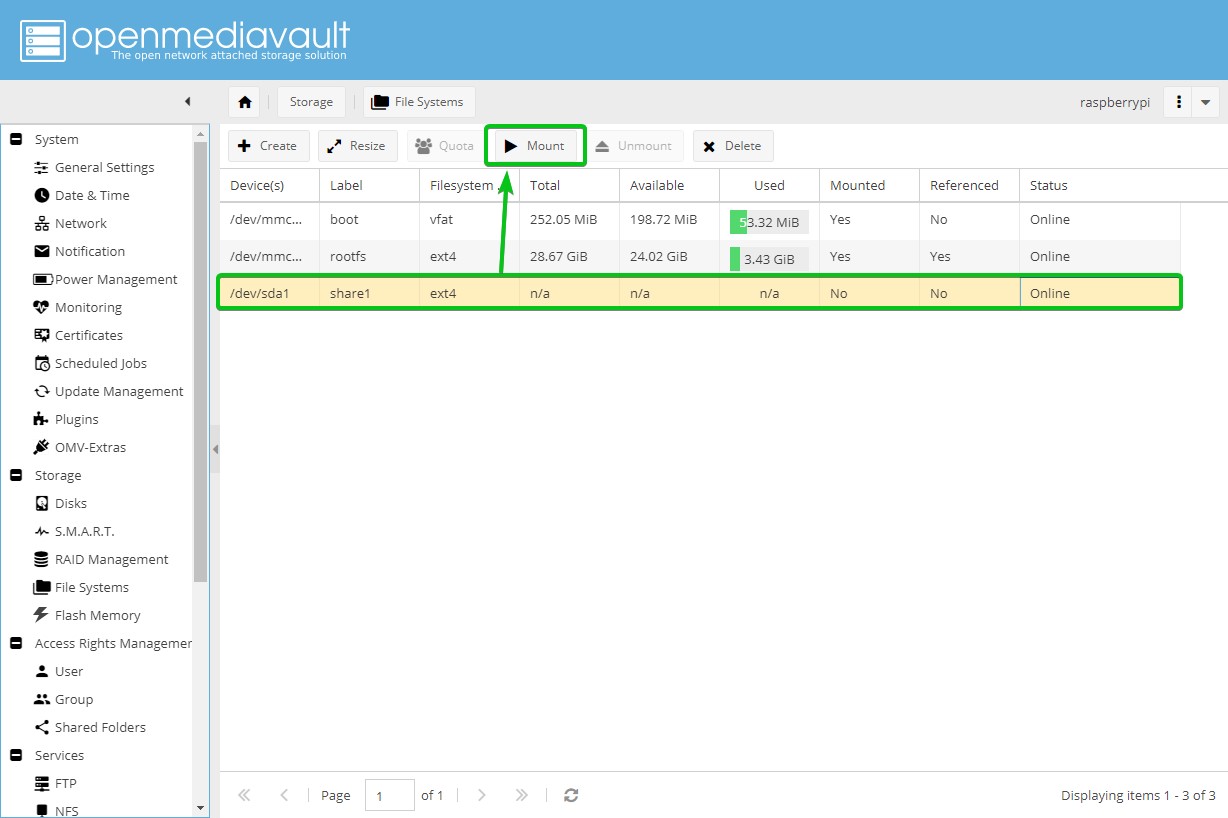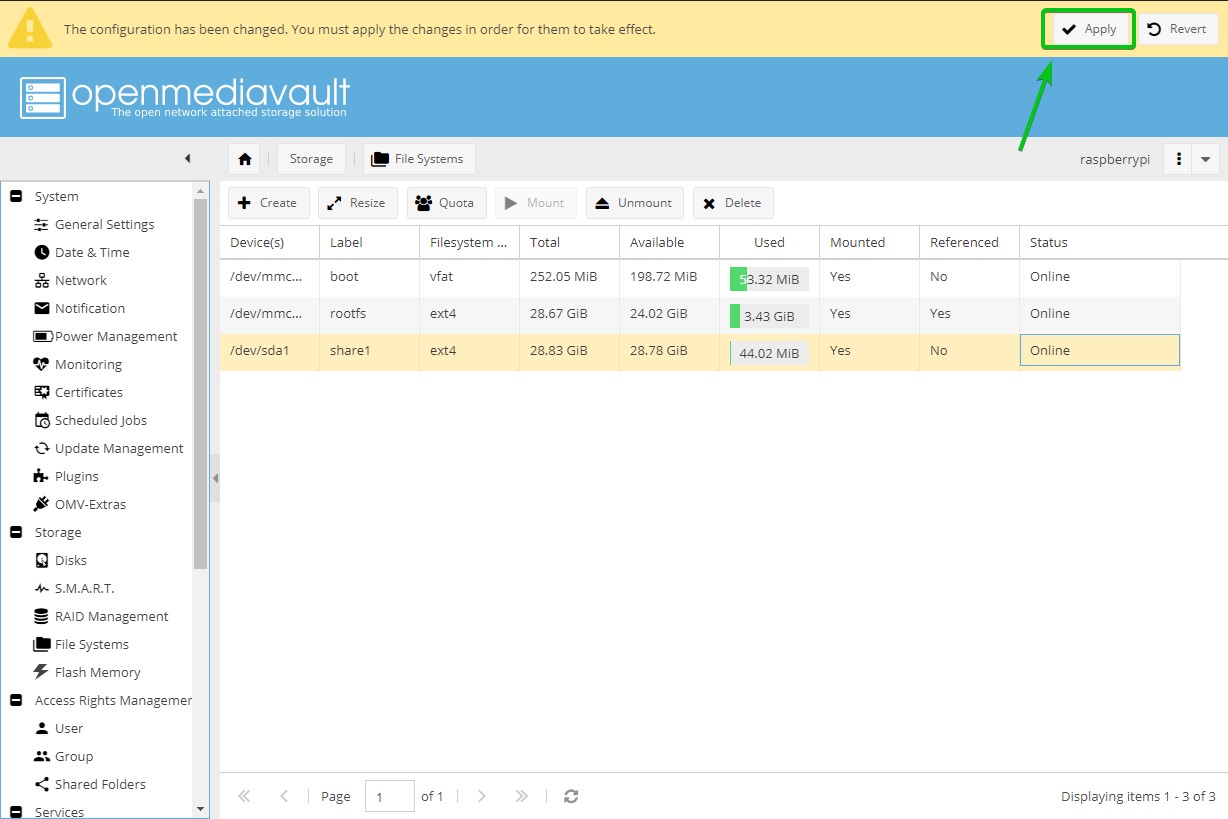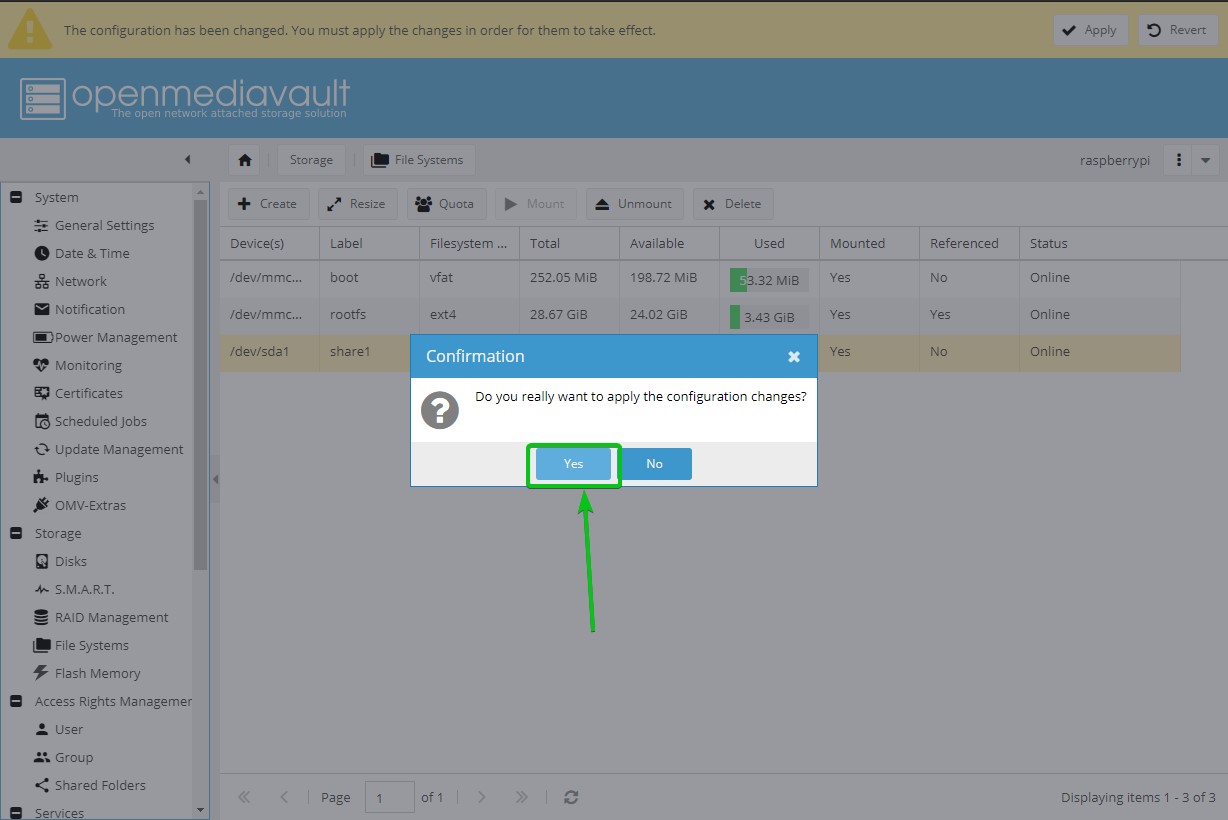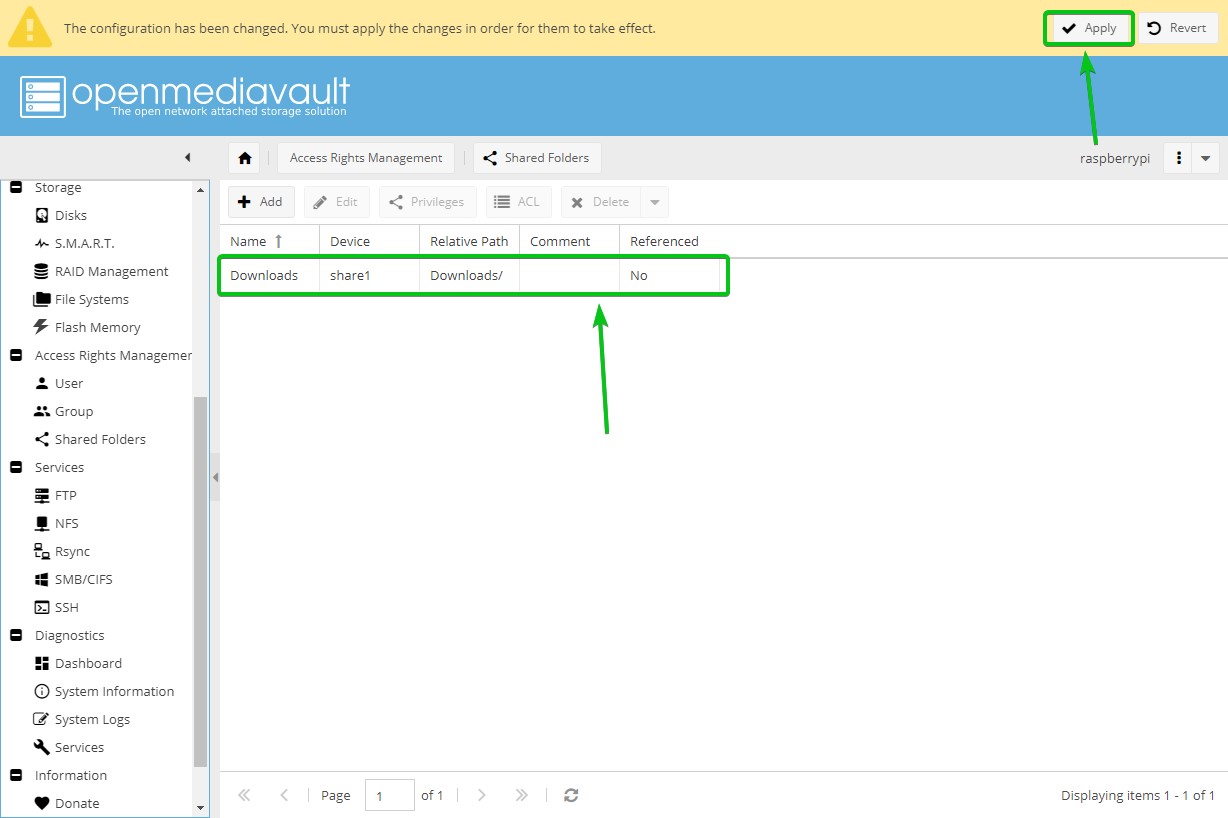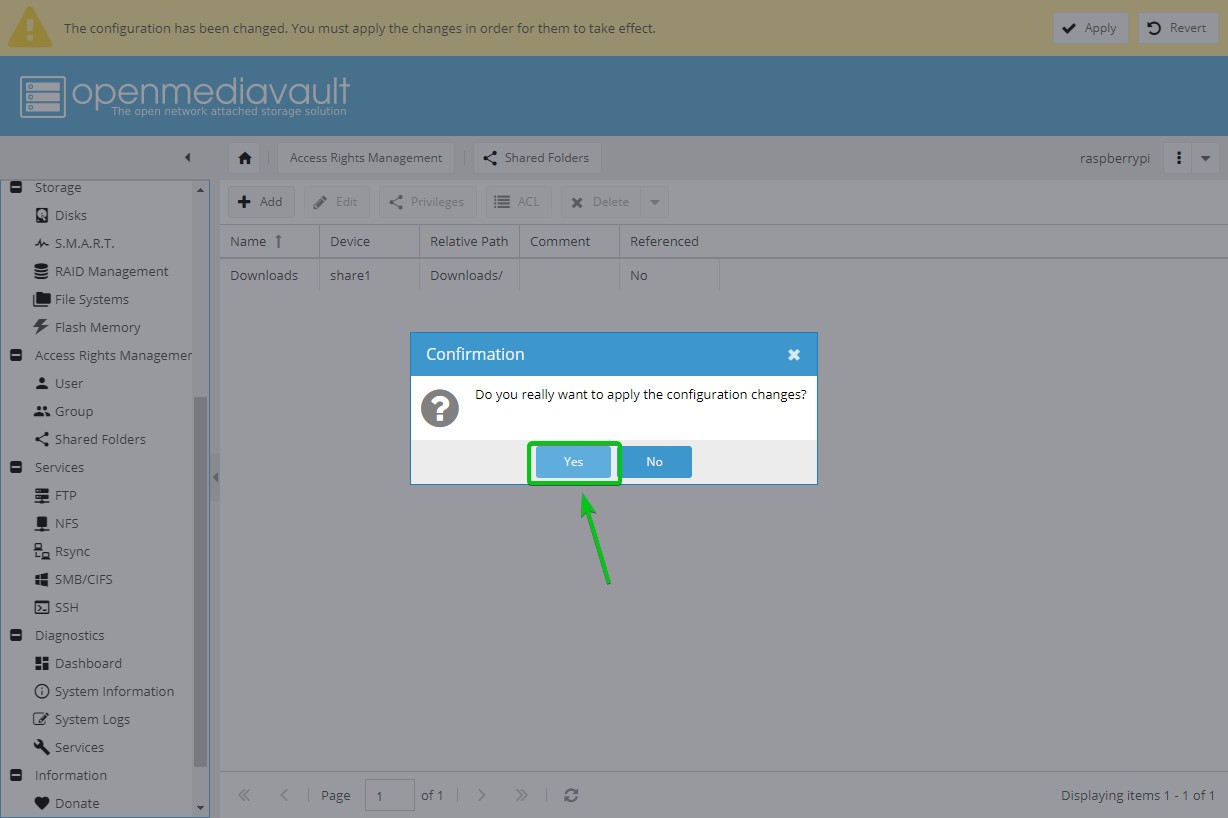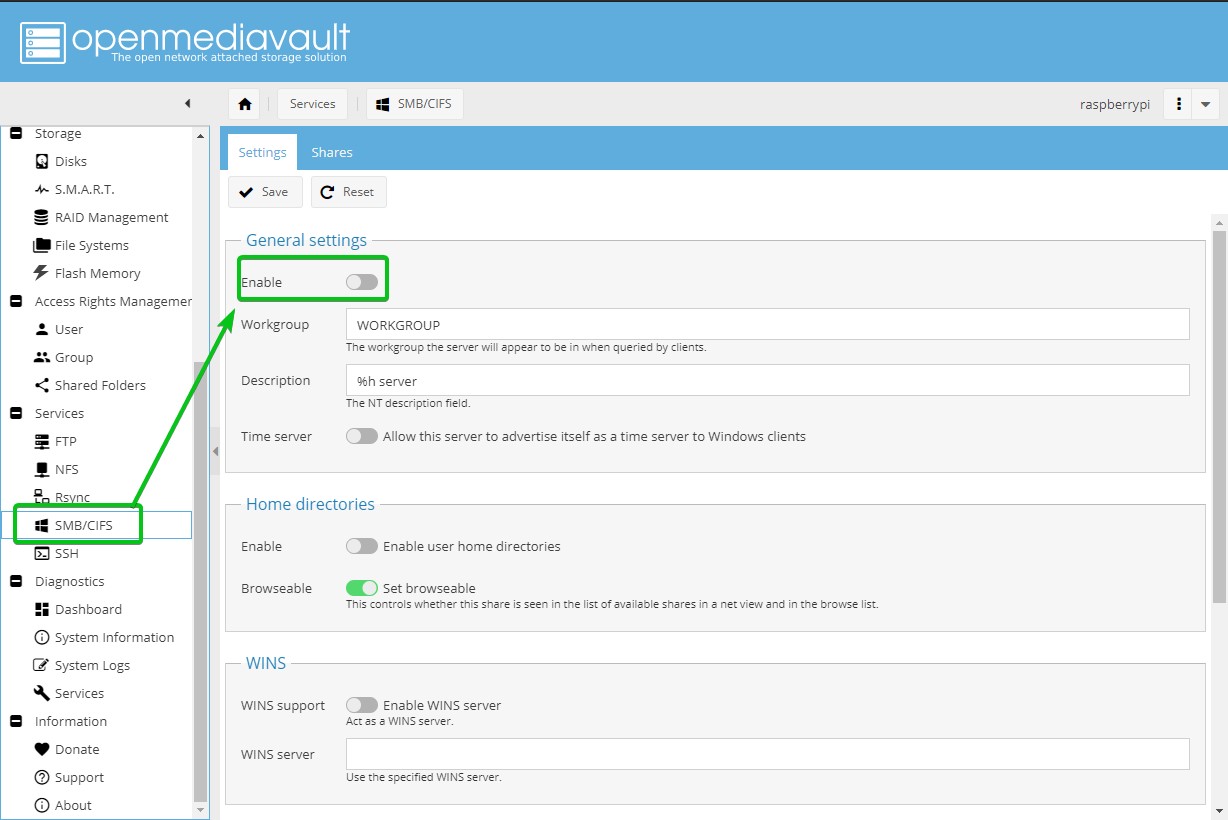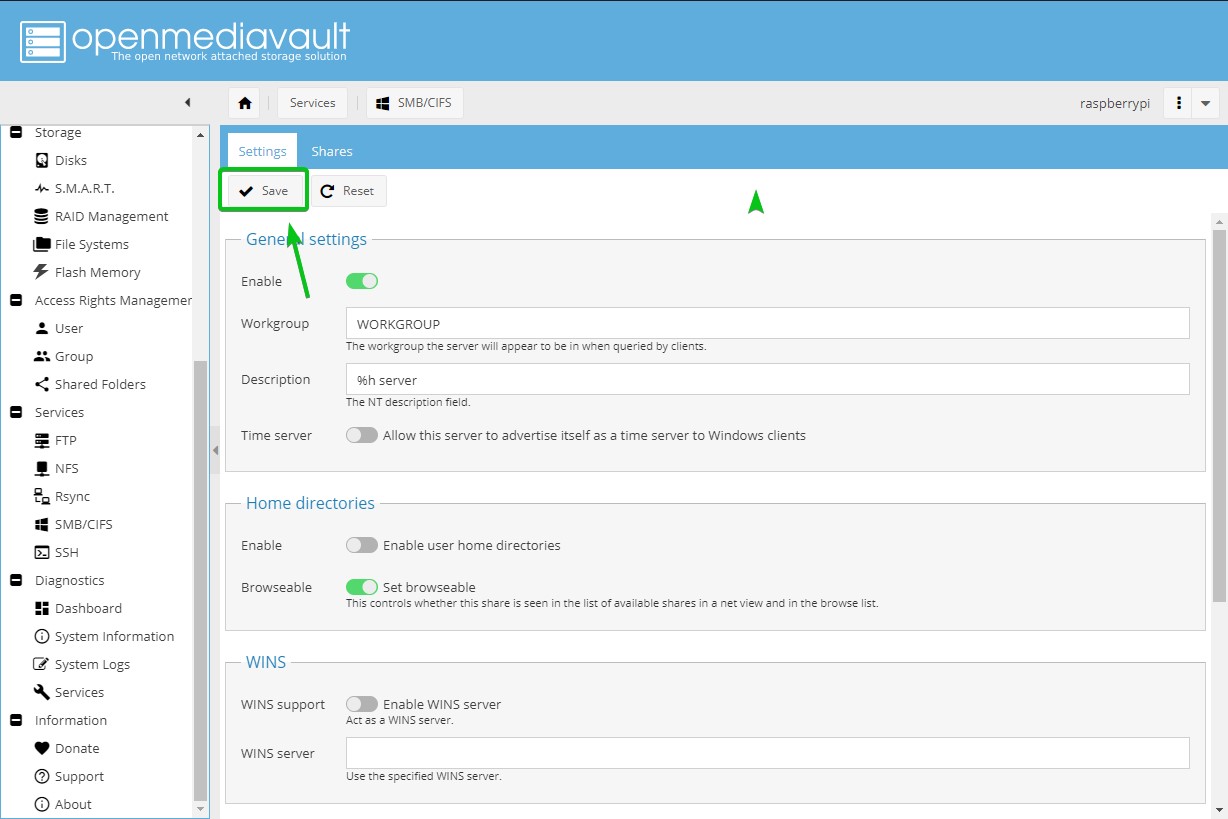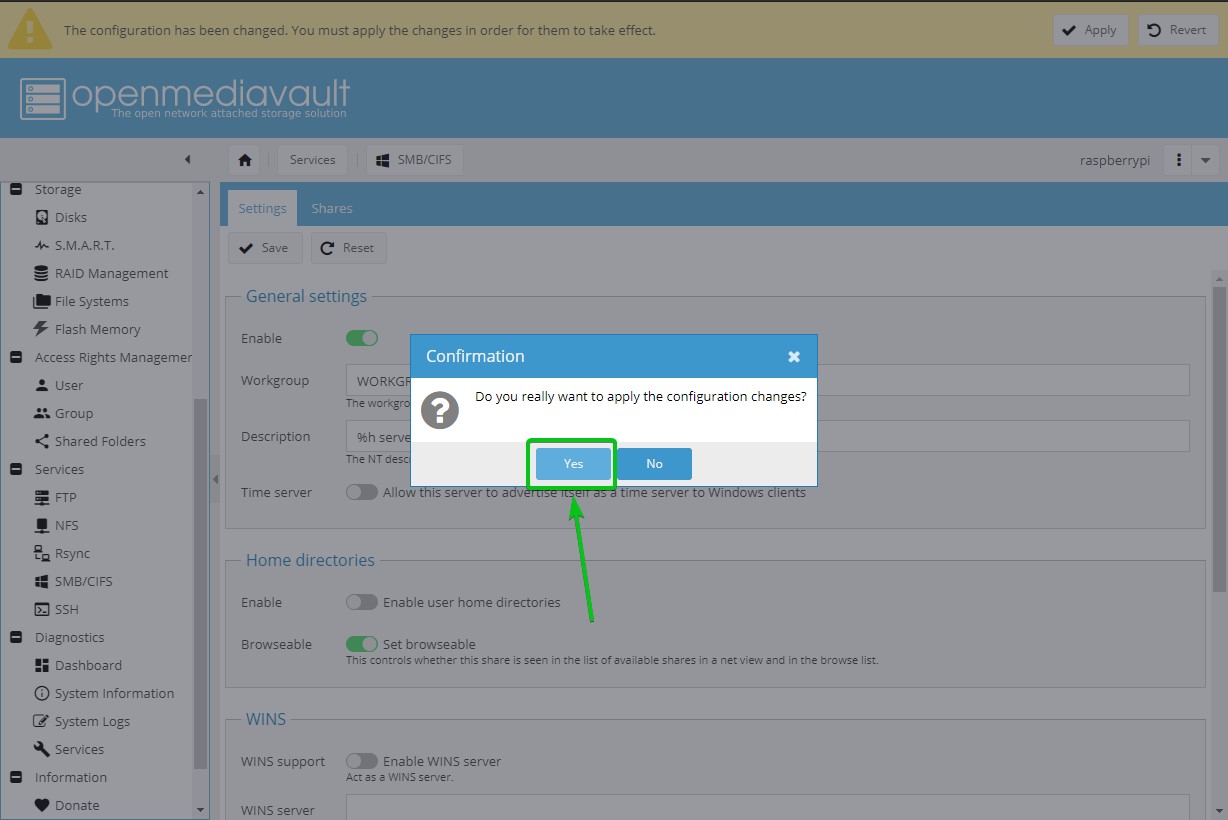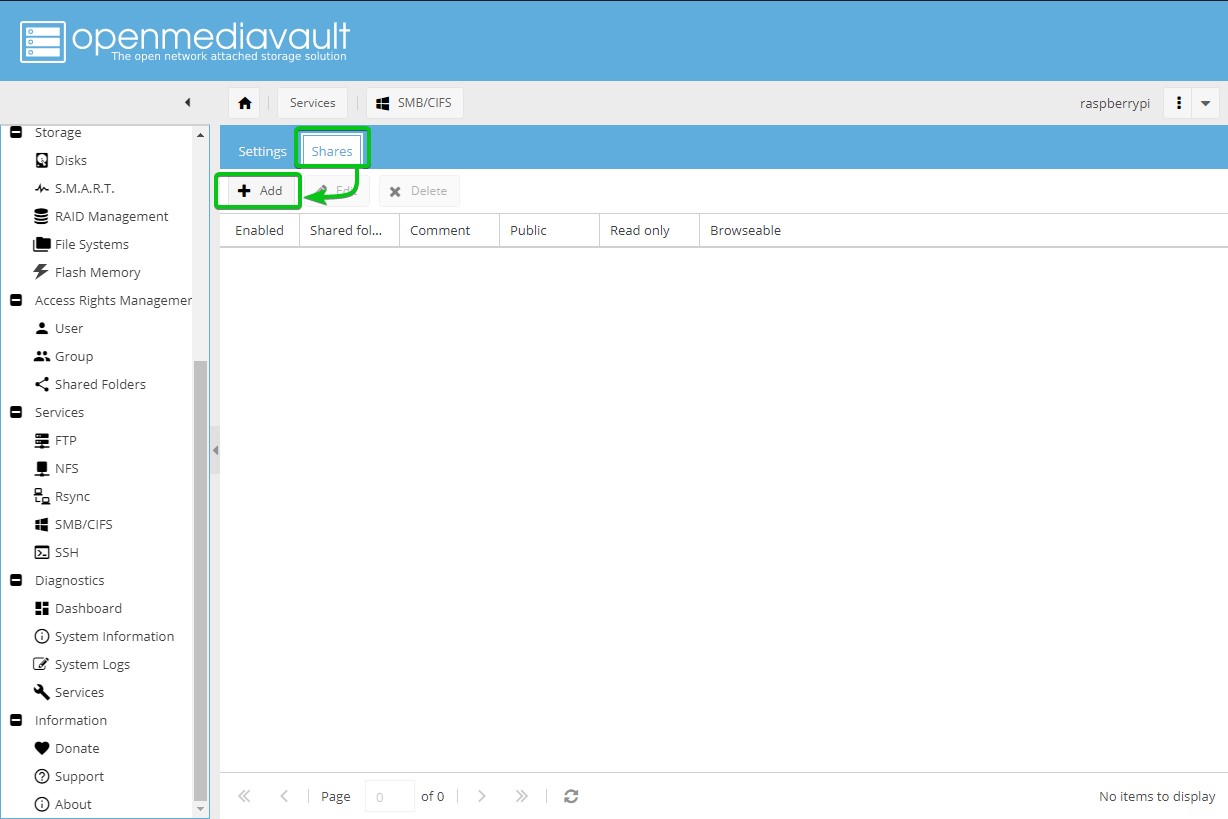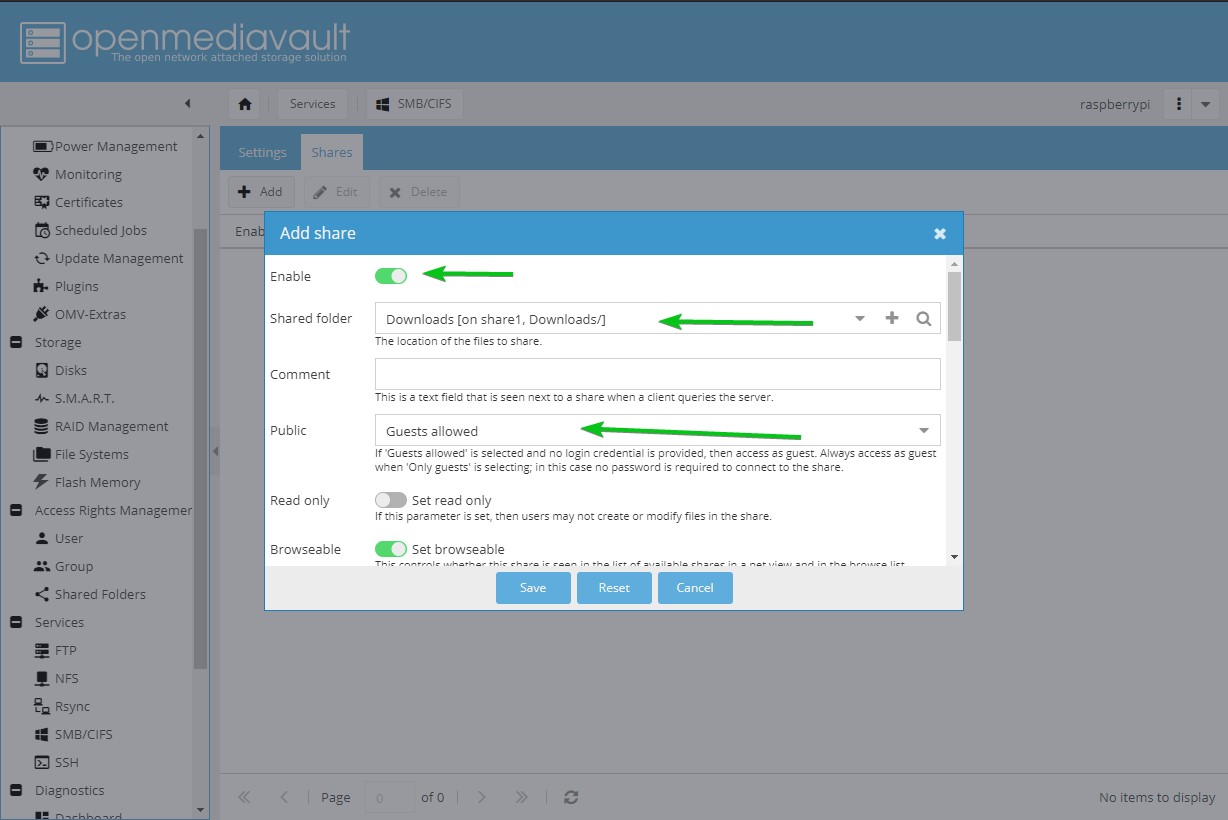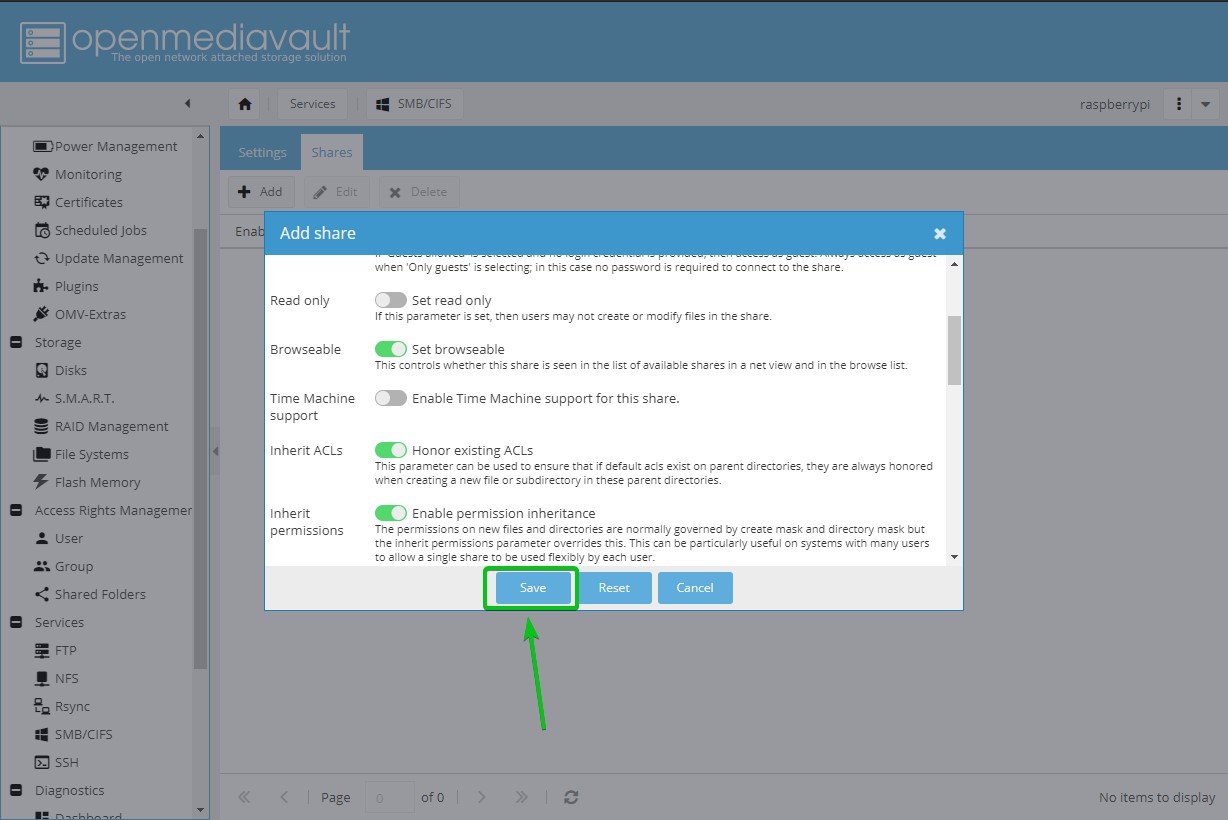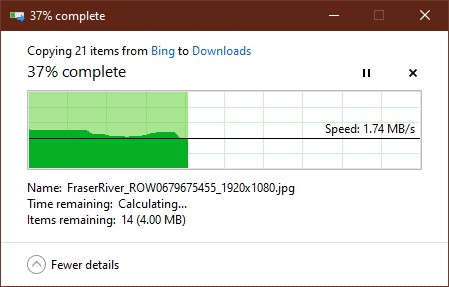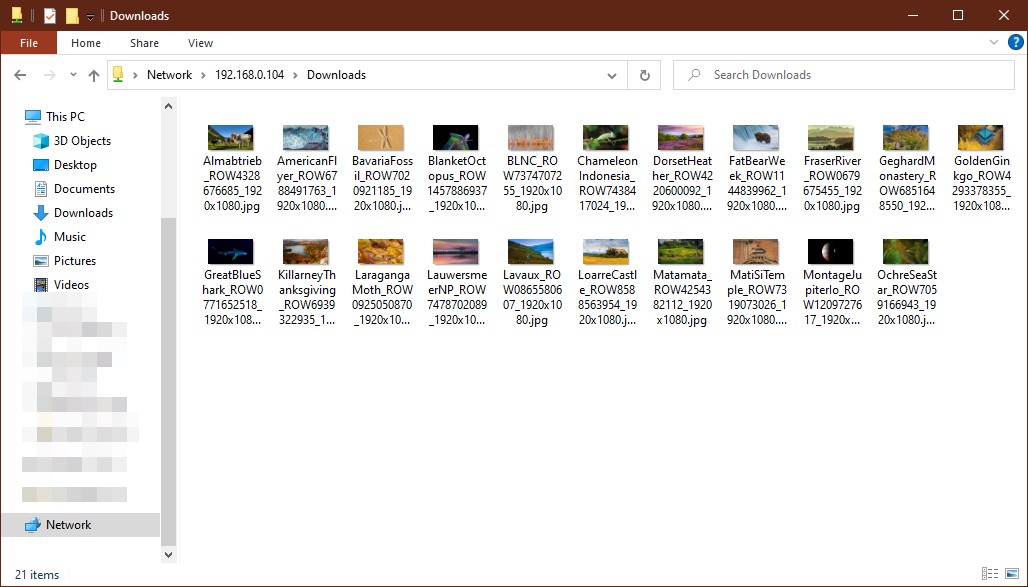Собственно, это не совсем сервер, просто несколько внешних дисков, подключенные к Raspberry Pi через USB-HUB. Дело в том, что у меня скопилось порядочное количество архивов — семейные фотографии в RAW, рабочие архивы, коллекция любимых и не очень фильмов с правильным переводом… Ну и так далее.
Хранить все это на компьютере нецелесообразно, да и опасно, в некоторой степени. Диски же крутятся все время, вырабатывая свой ресурс, даже если к ним не обращаются. Поэтому было принято вынести их отдельно, заодно поиграться со свежеприобретенной платой Raspberry.
В итоге у меня получился вполне рабочий файловый сервер на Openmediavault 5.5, который работает автономно и к которому есть доступ с любого устройства, подключенного к моей домашней сети. Теперь можно посмотреть фильм или фотографию, не включая компьютер. Так-же есть торрентокачалка, которая тоже работает автономно. А управлять ей и сервером можно прямо с телефона, через веб-интерфейс.
Содержание
Статья получилась просто огромная, так что если вам нужно выяснить что-то конкретное, можете переходить сразу в нужную ее часть.
Железо
Программная часть
Установка Openmediavault
Вариант 1
Вариант 2
1. Установка системы на Raspberry
2. Установка Openmediavault
Настройка Openmediavault
1. Общие настройки
2. Расшаривание папок
3. Ошибка доступа в Windows
Docker и Portainer. Установка и настройка
Установка Transmission
Заключение
Железо
Итак, мой сервер состоит из собственно, Raspberry Pi 4 B+ с 4Гб памяти, USB 3.0 хаба, гигабитного свитча и нескольких внешних дисков. Еще имеется роутер Zyxel Keenetic какой-то древней ревизии. Он занимается добыванием интернета, посредством USB-модема и распространением его в моей домашней сети. Схему подключения можно увидеть на картинке:
Как видно, один диск подключен напрямую к малине. Это сделано, потому что он 2.5″ и не имеет внешнего питания, а хаб с ним не справляется. Кроме того, этот диск используется для промежуочных операций, поэтому он должен работать быстрее. Я искренне верю, что без хаба он работает быстрее 
Программная часть
Как я уже упоминал, сервер работает под управлением Openmediavault 5.5. В него встроен Docker и интерфейс управления им — Portainer. В Docker’е мной установлен торрент-клиент Transmission и веб-сервер Nginx (зачем-то). Я не очень понимаю, как работает Docker. Вроде он умеет запускать приложения, каждое в своем контейнере и они друг другу не мешают. А он (Docker) занимается распределение ресурсов между ними. Как-то так.
Но, несмотря на то, что я многих вещей не понимаю, я все-же расскажу, как создать и настроить такую систему. Я же сделал 
Установка Openmediavault
Вариант 1
Здесь должно было быть написано про то, как скачать с сайта openmediavault.org готовый образ системы для Raspberry с установленным Openmediavault, но случилось так, что этот вариант больше не работает, вот по этой причине, поэтому переходим сразу к варианту 2.
Вариант 2
Собственно, это будет вольным пересказом вот этого документа, который является официальной инструкцией по установке Openmediavault 5.5 на ARM-устройства. Если вы хорошо знаете английский язык, можете прочитать все там. Если нет — едем дальше.
1. Установка системы на Raspberry
Для того, чтобы установить систему на Raspberry, понадобится карта памяти MicroSD. Рекомендуется не менее 8 Гб, но лучше больше, так как вы захотите туда установить дополнительные приложения. Моя, к слову, 32Гб. Поставил и забыл.
Итак, скачиваем образ системы по этой ссылке. Нужно пролистать до заголовка «Raspberry Pi OS» и выбрать «Raspberry Pi OS Lite». Это Debian в минимальной комплектации. Там нет графической оболочки и дополнительного софта. В принципе, можно установить любой из трех вариантов, представленных на той странице, но если вы не планируете подключать к Raspberry монитор и клавиатуру с мышью — смысла в них нет.
Если все скачалось удачно, можно развернуть образ системы на MicroSD карту. В официальной инструкции настоятельно рекомендуется проверить контрольную сумму файла, чтобы подтвердить его целостность, но я этого не делал, понадеявшись… на русское авось, наверное.
Чтобы развернуть образ, понадобится программа Raspberry Pi Imager. Вставляем карту памяти в кардридер, кардридер вставляем в USB порт и запускаем «Raspberry Pi Imager». Там всего три кнопки — ошибиться невозможно
Нажимаем «Choose OS», листаем вниз до пункта «Use custom» и выбираем на диске наш свежескачанный образ.
Затем нужно выбрать диск назначения и «WRITE». После записи и верификации, ваша карта памяти готова к переезду в . Но перед этим нужно сделать одну важную вещь. Откройте карту памяти со свежезаписанным образом в проводнике и создайте в корне пустой файл с именем «ssh». Просто имя, без расширения. Это включит протокол SSH, ведь по-другому вы общаться с малиной не сможете.
Вставляем карту памяти в слот Raspberry, подключаем сетевой кабель и питание. Через несколько минут система запустится и можно будет подключиться к Raspberry по протоколу SSH. Но прежде всего нужно узнать ее IP-адрес. Для этого нужно зайти в интерфейс роутера и посмотреть на новые устройства, появившиеся в сети.
Как видно, в моей сети малине дали адрес 192.168.1.44. Имя «PI4» я назначил уже сам и закрепил постоянный IP за этим устройством. Дело в том, что выдачей адресов у меня там командует DHCP, так что если оставить, как есть, в следующий раз адрес может смениться — поди ищи его потом.
Отлично, адрес мы нашли, теперь нужно подключиться к командной строке Linux. Сделать это рекомендуется про помощи Putty — это бесплатный SSH и Telnet клиент, но у меня свой путь. Я нашел программу Bitvise SSH Client, которая мне нравится больше. Выглядит она вот так:
На скриншоте уже введены IP-адрес и логин с паролем. Сделайте так-же. Логин и пароль по умолчанию будут:
pi
raspberryИ нажимаем кнопку «Log in». Программа при первом подключении выведет окошко с предупреждением:
Нажимаем кнопку «Accept and Save» и видим такую картину:
Теперь сюда можно вводить команды. И первой командой будет обновление ПО Raspberry. Вернее, это будут три команды:
sudo apt-get update
sudo apt-get upgrade -y
sudo rm -f /etc/systemd/network/99-default.link Вводить их следует по строке за один раз, дожидаясь исполнения каждой. Необязательно вводить их вручную. Можно скопировать отсюда и вставить в окно терминала при помощи правой кнопки мыши. Кстати, чтобы скопировать текст из окна терминала, просто выделите его и он скопируется сам.
Итак, после первой команды вы получите что-то такое:
После второй — такое:
А третья команда просто удаляет какую-то ссылку, видимо, ненужную.
Ну вот и все, система установлена, обновлена и готова к установке Openmediavault.
Перед этим нужно выполнить еще одну команду:
sudo reboot nowДумаю, объяснения тут не требуются
2. Установка Openmediavault
Запускаем команду:
wget -O - https://github.com/OpenMediaVault-Plugin-Developers/installScript/raw/master/install | sudo bashЖдем. Команда эта — ссылка на скрипт, который все загрузит и установит. По времени это может занять до получаса. В это время не закрывайте окно терминала, иначе все сломается. В конце установки Raspberry перезагрузится автоматически.
Вот и все. Openmediavault установлен и готов к работе.
Настройка Openmediavault
Открываем браузер и вводим IP-адрес, по которому у нас находится Raspberry в сети. И сразу попадаем в веб-интерфейс Openmediavault.
Логин/пароль по умолчанию:
admin
openmediavaultПосле загрузки нас встречает такой экран:
Интерфейс тут несложный, можно прогуляться по ссылкам слева, думаю, многое станет понятно.
1. Общие настройки
Для начала зайдем в настройки («General Settings«):
Лично мне здесь интересен пункт «Auto logout«. Я сделал его «Disabled», чтобы меня не выкидывало из системы каждые 5 минут.
Далее, на этой же странице можно переключиться на вкладку «Web Administrator Password» и поменять пароль.
Не забывайте каждый раз нажимать кнопку «Save». Особенно, когда вверху страницы появляется такая желтая плашка.
Теперь выбираем ссылку («Network«). Тут нас интересует две вкладки. Первая, она уже открыта «General», тут можно поменять «Hostname».
Это имя будет появляться в сетевом окружении. Вторая вкладка «Interfaces». Тут находятся сетевые интерфейсы, которые используются в текущий момент.
Тут можно изменить имеющиеся или добавить/удалить новые сетевые интерфейсы, например, WiFi. У меня подключен проводной интерфейс, пусть так и остается.
2. Расшаривание папок
Теперь посмотрим наши подключенные диски. Если вы их подключили, конечно. Слева нажмите ссылку «Disks». Мои диски выглядят вот так:
Далее, выберите слева ссылку «File Systems», чтобы проверить, все ли доступные диски смонтированы в системе:
Из моих смонтирован оказался только один. Ну ладно, вообще ни одного, этот я сам смонтировал вручную, только что.
Чтобы смонтировать файловую систему, нужно выбрать ее в списке и нажать кнопку «Mount». Потом обязательно сохранить настройки. И так повторить со всеми несмонтированными файловыми системами.
А теперь самое время расшарить пару папок, чтобы их было видно в сети. Для этого слева переходим на страницу «Shared Folders»
Нажимаем «+ Add» и появляется такое окно:
Поля там конечно будут пустые, вам их нужно заполнить. В поле «Name» пишем название, которое появится в списке сетевых папок в вашем проводнике, в поле «Device» выбираем файловую систему, на которой нужно расшарить папку, в поле «Path» выбираем нужную папку. И все. «Permissions» оставляем по-умолчанию, в комментарии пишем комментарии. Или не пишем. В конце нажимаем «Save». Так же сохраняем общую конфигурацию. Желтая плашка с ней появится чуть позже.
Повторяем то-же самое для остальных папок, которые нужно расшарить. В итоге получится как-то так:
Несмотря на то, что мы расшарили папки, в проводнике мы их пока не увидим. Дело в том, что система Linux способна расшарить папки вовне только при помощи протокола Samba, который нам еще предстоит включить и настроить. Для этого слева выбираем ссылку «SMB/CIFS» и попадаем на страницу настройки протокола SMB.
В разделе «General Settings» Жмем на «Enable», сохраняем. Потом еще раз сохраняем и переходим во вкладку «Shares».
Тут снова Нажимаем «+ Add» и появляется такое окно:
Тут параметров значительно больше, но нам нужно только несколько. В поле «Shared folder» выбираем одну из расшаренных ранее папок, в поле «Public» выбираем «Only Guests», чтобы папка была видна всем.
Еще можно запретить запись/удаление для папки, установив параметр «Read only». Ну и все. Нажимаем «Save», затем «Apply» и все. Первая папка расшарена. Можно открыть проводник и проверить.
3. Ошибка доступа в Windows
Если же папку открыть не удалось и вообще видно только сетевое имя, а открыть его нельзя — появляется ошибка, значит вы все сделали неправильно вы являетесь счастливым обладателем Windows 10, какой-то там версии, с которой Microsoft ужесточил правила безопасности при пользовании сетевыми ресурсами. Короче, анонимныый доступ к ресурсам сети запрещен на уровне системы.
В этом случае нужно создать пользователя специально для доступа к расшаренным папкам и выдать ему соответствующие полномочия.
Для этого слева переходим на страницу «User» и видим там одного единственного пользователя «pi», который является администратором системы. Использовать его пароль в Windows мне не удалось по какой-то причине, поэтому просто создадим нового.
Нажимаем «+ Add», вводим имя, например «guest» и такой-же пароль. Сохраняем все, что можно и переходим на страницу «Shared folders».
Выделяем нужную папку и нажимаем кнопку «Privileges».
Открывается окно с привилегиями для данной папки. Там ставим галку напротив пользователя «guest», разрешая ему что-то делать с этой папкой и сохраняем все.
Опять переходим на страницу «SMB/CIFS», переходим на вкладку «Shares» и дважды щелкаем на папке, которую нужно расшарить.
В поле «Public» ставим значение «No» и сохраняем все. Пробуем открыть в проводнике и все работает. Только сначала нужно ввести логин и пароль пользователя «guest».
После этого папка доступна.
Итак, мы только что расшарили папку и дали ей возможность открываться в Windows 10. Получилось весьма сумбурно, поэтому изложу еще раз, вкратце:
- Создаем пользователя guest
- Расшариваем папку в «Shared folders»
- Тут-же задаем ей привилегии. Кнопка «Privileges», галка на пользователе «guest»
- Создаем шару в «SMB/CIFS», в поле «Public» ставим «No»
- Открываем шару в Windows Explorer, вводим guest/guest
- Радуемся.
Docker и Portainer. Установка и настройка
Docker служит для установки сторонних приложений и запуска их в изолированной среде, так называемых «контейнерах». Но сначала его самого нужно установить. Делается это нажатием одной кнопки в интерфейсе Openmediavault.
Слева выбираем «OMV-Extras» и на открывшейся странице переходим во вкладку «Docker». Там нажимаем на кнопку «Docker» и выбираем в выпадающем списке «+ Install».
Во всплывающем окне будет показан процесс установки. Как только он завершится, это окно можно закрыть.
Теперь установим Portainer. Для этого нужно сделать почти то-же самое, только нажать другую кнопку:
После установки закрываем всплывающее окно и нажимаем соседнюю кнопку «Open Portainer». Приветственный экран Portainer откроется в новой вкладке.
Тут нужно установить пароль и изменить имя, если нужно. После этого нажимаем кнопку «Create user» и попадаем в главное окно Portainer. Интерфейс очень напоминает Openmediavault. Те же ссылки слева, открывающие окна справа.
У меня при первом запуске не работало добавление приложений, Portainer выдавал ошибку, что дескать не настроен «Endpoint», однако при втором подключении я получил вот такой экран:
Знающие люди из Гугла подсказали, что выбирать нужно кнопку Docker, для того, чтобы он работал локально. В общем, в итоге все заработало.
Я уже упоминал ранее, что я не очень понимаю, как это работает. Просто я поставил себе задачу и решил ее. Система вполне работоспособна, хоть и требует доработок. А вы, если хотите узнать больше о работе с Docker, лучше воспользуйтесь специализированными ресурсами.
Тем не менее, напоследок расскажу, как установить и настроить приложение в Docker. Вернее, получится сперва настроить, а потом установить, потому что там это происходит именно так.
Установка Transmission
Большинство нужных приложений можно найти на hub.docker.com. Transmission я взял там-же, как и инструкцию по установке. Мы будем устанавливать Transmission через Stacks, потому что так проще.
Итак, открываем Portainer и приступаем. Выберите слева «Stacks» и откроется такая страница:
Нажимаем синюю кнопку «+ Add stack» и идем на hub.docker.com за Transmission.
Листаем вниз, до заголовка «docker-compose». Отсюда нам нужно взять текст:
---
version: "2.1"
services:
transmission:
image: ghcr.io/linuxserver/transmission
container_name: transmission
environment:
- PUID=1000
- PGID=1000
- TZ=Europe/London
- TRANSMISSION_WEB_HOME=/combustion-release/ #optional
- USER=username #optional
- PASS=password #optional
- WHITELIST=iplist #optional
volumes:
- <path to data>:/config
- <path to downloads>:/downloads
- <path to watch folder>:/watch
ports:
- 9091:9091
- 51413:51413
- 51413:51413/udp
restart: unless-stoppedИ поправить его под свою конфигурацию. Собственно, это и есть настройка. Итак, нас тут интересует: «PUID/PGID», «TZ», «USER/PASS» и рабочие папки программы.
PUID/PGID — это идентификатор пользователя. Узнать его можно командой «id» в терминале. В ответ получите список идентификаторов:
Нас тут интересует «uid» и «gid», они равны 1000, а значит ничего менять не придется. Далее TZ — это Time Zone. Пишем часовой пояс, в котором мы находимся. Я написал «Europe/Samara». С логином-паролем все понятно, только пишите его тут безо всяких кавычек. Если система локальная и контроль доступа не нужен, можно оставить просто пустое место.
Рабочие папки нужно создать на рабочем диске, очень желательно не на том, где стоит система. Для этого возвращаемся в Openmediavault и создаем расшаренную папку. Ну как, создаем. Нажимаем «Добавить», вводим имя, выбираем диск и вводим путь. Если такого пути нет, система его создаст.
Повторяем два раза, для оставшихся папок и теперь самое интересное. В конфиг нужно ввести абсолютный путь. Чтобы узнать его, нужно здесь-же включить соответствующую колонку отображения, которая не включена по-умолчанию. Как-то так:
И тогда мы его увидим. Самое интересное начинается сейчас. Я нашел решение у одного товарища на ютубе. Проблема в том, что путь слишком длинный для набора вручную и максимально неудобен для запоминания, а скопировать текст в этих полях нельзя. Открываем инспектор кода. В Google Chrome это «Ctrl + Shift + C», тыкаем на абсолютный путь и получаем его в виде кода документа:
Заковыристо, но это самый быстрый способ. Повторяем это еще два раза для остальных папок и в итоге должно получить что-то такое:
---
version: "2.1"
services:
transmission:
image: ghcr.io/linuxserver/transmission
container_name: transmission
environment:
- PUID=1000
- PGID=1000
- TZ=Europe/Samara
- TRANSMISSION_WEB_HOME=/combustion-release/ #optional
- USER=
- PASS=
- WHITELIST=
volumes:
- /srv/dev-disk-by-uuid-D0B29CC0B29CAD0A/tmp/transmission_config:/config
- /srv/dev-disk-by-uuid-D0B29CC0B29CAD0A/tmp/transmission_downloads:/downloads
- /srv/dev-disk-by-uuid-D0B29CC0B29CAD0A/tmp/transmission_watch:/watch
ports:
- 9091:9091
- 51413:51413
- 51413:51413/udp
restart: unless-stoppedХочу обратить внимание на три параметра, которые могут повлиять на доступность Web-интерфейса. Это «USER», «PASS» и «WHITELIST». Их нужно оставить пустыми.
Кажется все готово. Возвращаемся в Portainer. Там должна быть открыта страница добавления нового стека. Пишем его название в поле «Name». Можно назвать просто «transmission» и вставляем содержимое нашего конфига в редактор ниже. Целиком, включая три верхних тире:
И в самом низу страницы нажимаем кнопку «Deploy the stack», несколько минут ждем, пока все загрузится и вуаля!
Открываем новую вкладку в браузере и вводим адрес малины с портом 9091. В моем случае это будет 192.168.1.44:9091
Дальше, я думаю, понятно, что делать. Можно нажать «+» и загрузить торрент-файл, а можно его просто скопировать в папку «watch» и программа загрузит его автоматически.
Заключение
Итак, у меня теперь есть хранилище файлов, не привязанное к компьютеру. Бонусом имеется торрентокачалка и целый hub.docker.com для установки других нужных приложений.
I’ve been working on getting to a video about installing OpenMediaVault on a Raspberry Pi for a while now and even went so far as to download the files I would need for the video and put them on my desktop for safe keeping and a little reminder to hurry up and make the video.
This morning I decided to finally make the video. I went back through some online resources and realized they had changed the entire process when they released version 5 of OpenMediaVault.
Makes me glad that I didn’t make that video sooner.
In order to setup an OpenMediaVault Raspberry Pi server, you’re going to need a few things:
- Raspberry Pi 3 or 4 with a proper power supply
- Micro SD Card – 8GB or more with USB Adapter
- Ethernet Cable is preferable for network access
- External USB Hard Drive that you’re okay formatting / erasing
- A Computer – I’m using a Windows 10 PC
- SSH program like Putty
Once you’ve gathered all that, you’re set to go.
Getting Started
Download Raspian Lite for your Raspberry Pi.
Download Etcher.
Plug your Micro SD card into your computer and open Etcher.
In Etcher, select the Raspbian Lite image file, then select your Micro SD Card, then click “Flash”.
Once Etcher has written and verified everything, unplug the Micro SD card reader and then plug it back in. Then, open your file explorer and look for the drive labeled “boot”. Open that drive and right click inside the windows and click “Create new text file”. Name the file “ssh” (without quotes) and make sure to remove the .txt from the file name. Windows will ask if you’re sure you want to change the file extension. Click “Yes”.
Initial Setup
Unplug the Micro SD card reader, remove the Micro SD card from it and then plug it into your Raspberry Pi. Make sure that your network cable is plugged in and then plug in the power cable to power on your Raspberry Pi.
Now you’ll want to wait a few minutes to give the Raspberry Pi a few minutes to boot up and get settled. While this is happening, login to your router and find the Raspberry Pi’s IP address. You’re going to need that for the rest of the setup process.
Once you’ve got the IP address and you’ve given the Raspberry Pi time to boot, open an SSH program like Putty. Type in the IP address in the “Host Name” field. Leave the port set to 22.
Click the “Open” button at the bottom of the program.
Click “Yes” on the Putty Security Alert.
A terminal window will pop up asking you to login. The username is “pi” and the password is “raspberry”. Just enter the username and password without the quotes. Any time you’re typing in a password, you won’t see any asterisks or anything. Just type your password and press Enter.
Next, you’ll want to change the “raspberry” password to something more secure. To do that, type “passwd” in the terminal window. It will ask you to enter the current password. Type in “raspberry” (again, without quotes) and press Enter. It will then ask you to enter your new password. Do that and press Enter. It will then ask you to re-enter your new password. Do that and press Enter.
Now it’s time to work on making sure that Raspian is full updated. In the terminal window, type:
sudo apt-get update
Let the system complete. When you’ve got a blinking cursor, type the following:
sudo apt-get upgrade
This may take several minutes, so let it run until you get back to a blinking cursor. Then type:
sudo reboot
This will reboot your Raspberry Pi and close your Putty connection. Wait a couple of minutes and the open Putty and login like you did before with your new password.
Add Pi User to SSH
Next, you’ll add the “pi” user to the SSH group with this command:
sudo adduser pi ssh
Install OpenMediaVault
Once that’s complete, you’re going to download and execute a file from Github that will install and configure the OpenMediaVault server software. That script is this:
wget -O - https://github.com/OpenMediaVault-Plugin-Developers/installScript/raw/master/install | sudo bash
This process may take a while depending on your internet connection and what version Raspberry Pi you’ve got. It took me about 15 minutes to complete this, but understand that it could take upwards of 30 minutes.
Once the script has run and completed, reboot the Raspberry Pi:
sudo reboot
At this point, you can plug in your external USB hard drive.
Post Continues After This Ad Break:
Ad Break
Donations help me keep the channel running
Post Continues Here:
First Login
Again, give the Raspberry Pi a couple of minutes to reboot and settle in, then open a web browser like Chrome. In the address bar, type in the IP Address of the Raspberry Pi and press Enter.
This should bring up an OpenMediaVault login screen. The username is “admin” and the default password is “openmediavault” (again without quotes).
There are a couple of things you’ll want to do as soon as you’re signed in for the first time.
First, change the “Auto Logout” setting by clicking “General Settings” under “System” in the left column. Then change the setting from 5 minutes to something like 30 or 60 minutes and then clicking “Save”. Then you’ll see a yellow bar across the top of the page that asks you to “Apply” or “Revert”. Click “Apply”. It may take a minute or 2 for the update to save.
Next, you’ll want to change the Web Administrator Password under “System > General Settings > Web Administrator Password”. Enter your new password in each field and click “Save” and then “Apply” in the yellow bar that appears at the top of the page.
Adding Storage
Now that you have the login stuff taken care of, it’s time to add your storage.
In the left column, look for “Storage”. “Disks” should be the first option under that. Click “Disks”. Select your USB hard drive from the list on the right and then click the “Wipe” button and confirm that you want to wipe the disk. When the process is complete, click the “Done” button.
Next, click “File Systems” in the left column. In the main area of the page, click the “Create” button.
In the “Device” dropdown, select your USB hard drive. Give the device a Label. I called mine “Files”. Then click “OK”. The page will ask if you want to format the device. Click “Yes”. The format process will take a minute or two depending on your hard drive size and if you’re on USB 2.0 or 3.0. Once the process is complete, click “Close”.
Select the newly formated USB hard drive and then click the “Mount” button. Then click “Apply” in the yellow bar at the top of the page.
Saving/applying may take a minute or 2, so be patient.
In the left column under “Access Rights Management” click “Shared Folders”.
Click “Add” and then give the Shared folder a name and select the shared file system you just created in the previous step. The Path will auto-fill with the name you just gave the Shared folder.
Set the “Permissions” to “Everyone: read/write” and click “Save”. Then click “Apply” in the yellow bar at the top of the page.
Next, under “Services” select the appropriate type of share for your network type. Because I’ve got an all Windows network, I’ll select “SMB/CFIS”. Once you’ve selected that, make sure that under “General Settings” the “Enable” option is green. If it’s not, click it so that it is and then click “Save” and then click “Apply” in the yellow bar at the top of the page.
Click the “Shares” tab in the blue bar at the top of the page and click “Add”.
Make sure the share is Enabled and then click the dropdown arrow and select the Shared folder you created earlier. Where it says “Public” change the setting from “No” to “Only guests” and click “Save”. Then click “Apply” in the yellow bar at the top of the page.
Saving/applying may take a minute or 2, so be patient.
At this point, you’ve done everything you need to do in order to setup a shared folder that has fully open access. To test this, we’ll go back to our Windows machine and open the file manager. In the address bar of the file manager, type this:
\192.168.1.xx (be sure to enter your Raspberry Pi's IP address here)
Then press Enter.
You should then see the shared folder you created. Open that folder and then start dragging files into it from your Documents or Desktop or wherever to make sure that everything is working as expected.
That’s it! You’ve setup your own Raspberry Pi OpenMediaVault Network Attached Storage device.
/=========================================/
Buy Parts on Amazon
Raspberry Pi 4 Max: https://amzn.to/34hHZm1
Hard Drive Enclosure: https://amzn.to/2LRtsag
Hard Drive: https://amzn.to/2PLegMP
/=========================================/
Music
Song: Next Level
Artist: SchemezMusic
YouTube URL: https://www.youtube.com/watch?v=Cl4STzKuNTs
SoundCloud: https://soundcloud.com/user-557502422-986552429
Twitter: https://twitter.com/SchemezM
/=========================================/
Here’s my Amazon Influencer Shop Link:
Amazon: https://dbte.ch/amazonshop
/=========================================/
Like what I do? Want to be generous and help support my channel? Here are some ways to support:
Patreon: https://dbte.ch/patreon
Ko-fi: https://dbte.ch/kofi
/=========================================/
Remember to leave a like on this video and subscribe if you want to see more!
/=========================================/
Follow Me:
Twitter: https://dbte.ch/tw
Facebook: https://dbte.ch/fb
Subscribe: https://dbte.ch/ytsub
#RaspberryPi #openmediavault #canakit
Raspberry Pi 4 — последнее предложение от фонда Raspberry Pi, и оно потрясающее. Это первое устройство в линейке микрокомпьютеров Raspberry Pi с 4 ГБ оперативной памяти, портом Gigabit Ethernet и портами USB 3.0. Эти новые обновления делают его идеальным для использования в качестве недорогого сервера OpenMediaVault.
В этом руководстве мы увидим, как настроить OpenMediaVault, а также как установить Raspbian Lite, базовую операционную систему, необходимую для запуска программного обеспечения.
Примечание: у вас есть более старое устройство Raspberry Pi? Хотите настроить на нем OpenMediaVault? Следуйте этому руководству здесь .
Перед тем как начать
Raspberry Pi 4 — быстрое устройство. Однако для запуска сервера вам все равно понадобится высокоскоростная карта Micro SD. Если у вашего Pi 4 еще нет быстрой карты Micro SD, подумайте о замене ее одной из следующих из списка ниже.
- Samsung 32 ГБ 95 МБ / с (U1) MicroSDXC EVO
- SanDisk Extreme PRO 32 ГБ 100 МБ / с
Конфигурация NOOBS (AKA New из коробки)
К сожалению, для Raspberry Pi 4 в проекте OpenMediaVault было решено отказаться от создания образов, которые можно легко прошить, с предустановленным OpenMediaVault. Вместо этого, если вы планируете использовать OMV на Pi 4, вам нужно вручную настроить его на Raspbian.
Есть несколько способов установить Raspbian на Raspberry Pi 4. Однако самый быстрый и простой способ — использовать установщик NOOBS, инструмент, который может установить Rasbian автоматически. Чтобы заставить NOOBS работать, следуйте пошаговым инструкциям ниже.
Шаг 1: Перейдите на страницу «Загрузки» на raspberrypi.org , потому что именно здесь NOOBS распространяется среди общественности.
> Шаг> На странице «Загрузки» найдите черный значок «NOOBS» и щелкните по нему мышью. Этот значок перенесет вас в область загрузки установщика «NOOBS».
Шаг 3: На странице загрузки «NOOBS» найдите параметр «Автономная и сетевая установка» и нажмите кнопку «Загрузить ZIP», чтобы начать загрузку.
Не используйте опцию «Скачать торрент» для NOOBS, если вы не знаете, как скачать fichiers поток под linux .
Шаг 4: Подключите карту Micro SD к компьютеру. Затем вам нужно отформатировать его в файловой системе Fat32. Если вы используете Mac или Windows, пропустите шаги 4-7. Чтобы отформатировать SD-карту в Fat32, обратитесь к руководству по эксплуатации компьютера.
Вы используете Linux? Откройте окно терминала и установите Gparted.
Ubuntu —sudo apt install gparted
Debian —sudo apt-get install gparted
Arch Linux —sudo pacman -S gparted
Fedora —sudo dnf install gparted
OpenSUSE —sudo zypper install gparted
Шаг 5: Найдите раскрывающееся меню справа в Gparted и щелкните по нему. Выберите карту Micro SD из списка.
Не знаете, как найти свою SD-карту в меню? Щелкните устройство, которое соответствует объему памяти карты Micro SD. Например, если у вас есть карта Micro SD на 32 ГБ, щелкните устройство 32 ГБ. Однако имейте в виду, что некоторые SD-карты округляют данные. Таким образом, 32 ГБ может быть 29 ГБ и т. Д.
Шаг 6: Выберите и удалите все разделы на SD-карте. Когда все разделы будут удалены, вы должны увидеть «не назначено».
Обязательно нажмите кнопку «Применить», чтобы подтвердить удаление разделов.
Шаг 7: Щелкните правой кнопкой мыши «Не назначено» и выберите «Новый». Затем найдите раскрывающееся меню «Файловая система» и установите для него значение Fat32.
Нажмите «Добавить» для подтверждения и «Применить», чтобы записать изменения на диск.
Шаг 8: После форматирования карты Micro SD в файловой системе Fat32 откройте файловый менеджер Linux и смонтируйте его.
Не знаете, как смонтировать SD-карту в файловом менеджере Linux? Найдите его слева и дважды щелкните по нему, чтобы установить.
Шаг 9: Подключив SD-карту, откройте второе окно файлового менеджера Linux и щелкните папку «Загрузки». Затем найдите ZIP-файл для NOOBS и щелкните его правой кнопкой мыши.
Шаг 10: Скопируйте все извлеченные файлы из папки NOOBS ZIP на карту Micro SD.
> Шаг> Отключите SD-карту, подключите ее к Raspberry Pi и включите Raspberry Pi. Также не забудьте подключить кабель HDMI, кабель Ethernet (необходим для правильной работы OpenMediaVault), мышь и клавиатуру.
Настроить NOOBS на Raspberry Pi довольно просто. Сказав это, если вы иметь плохо следуйте нашему руководству, см. официальную информацию о конфигурации noobs the Raspberry Pi Foundation для получить более совет.
Установка Raspbian Lite
Включив Raspberry Pi 4, следуйте пошаговым инструкциям ниже, чтобы установить Raspbian Lite на Raspberry Pi.
Шаг 1: Когда NOOBS запустится на Raspberry Pi 4, вы увидите сообщение «Подождите, пока NOOBS инициализируется». Сядьте, наберитесь терпения и ждите.
Шаг 2: Просмотрите список доступных операционных систем для установки и установите флажок «Raspbian Lite». Эта операционная система необходима для запуска OpenMediaVault, потому что она легкая и не содержит среды рабочего стола.
Шаг 3: Нажмите кнопку «Установить» вверху, чтобы начать установку Raspbian Lite.
Шаг 4: Сядь – Наберитесь терпения и позвольте установщику NOOBS настроить Raspbian Lite на вашем Raspberry Pi 4. По завершении установки вы увидите сообщение: «Операционная система (и) успешно установлена».
> Когда>
> Распбиан> Для этого сначала авторизуйтесь под логином pi и пароль Framboise .
Когда вы войдете в систему, вам нужно будет обновить систему. Для обновления выполните следующие команды в командной строке консоли.
sudo apt update обновить sudo apt -y
После обновления установите OpenMediaVault с официальным скриптом установки.
wget -O - https://github.com/OpenMediaVault-Plugin-Developers/installScript/raw/master/install | судо баш
Установка OpenMediaVault может занять много времени. Потерпи. После завершения процесса откройте вкладку браузера на любом компьютере в той же сети, что и Pi 4, чтобы получить доступ к веб-интерфейсу OpenMediaVault.
> https:>
OpenMediaVault is an open-source network-attached storage (NAS) solution based on the Debian GNU/Linux operating system. You can easily create an NAS server with OpenMediaVault, and OpenMediaVault runs well on Raspberry Pi 4.
At the time of writing, the latest version of OpenMediaVault is OpenMediaVault 5, which can be installed on Raspberry Pi OS to convert your Raspberry Pi 4 into an NAS server. In this article, we will show you how to install and use OpenMediaVault 5 on Raspberry Pi OS.
To create a Raspberry Pi 4 NAS with OpenMediaVault, you will need:
- a Raspberry Pi 4 single-board computer,
- a Raspberry Pi 4 USB Type-C power supply,
- a microSD card (16 GB or more) with the Raspberry Pi OS Lite image flashed onto it,
- internet connectivity, and
- a laptop or desktop computer for flashing the Raspberry Pi OS Lite image onto the microSD card and accessing the Raspberry Pi 4 via SSH.
NOTE: If you do not want to access your Raspberry Pi 4 remotely via SSH, you need to connect a monitor and a keyboard to your Raspberry Pi. However, we will connect to our Raspberry Pi 4 remotely via SSH using the headless Raspberry Pi 4 setup.
Click here if you need help flashing the Raspberry Pi OS Lite image onto the microSD card. If you are still getting the hang of Raspberry Pi and you need help installing Raspberry Pi OS Lite on your Raspberry Pi 4, click here. Finally, if you want to learn more about the headless setup of Raspberry Pi 4, click here.
Connecting to Raspberry Pi 4 via SSH:
For this example, let’s say the IP address of your Raspberry Pi 4 is 192.168.0.104. To connect to your Raspberry Pi 4 via SSH, run the following command from your computer:
Type in the password of your Raspberry Pi OS and press .
Now, you should be logged into your Raspberry Pi 4.
Upgrading Raspberry Pi OS
Before installing OpenMediaVault 5 on your Raspberry Pi OS, you should upgrade all existing packages of your Raspberry Pi OS. To do so, first update the APT package repository cache of your Raspberry Pi OS with the command $ sudo apt update.
To upgrade the other packages of your Raspberry Pi OS, run the command $ sudo apt upgrade.
To carry out the upgrade, press Y and then <Enter>.
The APT package manager should start downloading all the required packages from the internet. Once the packages are downloaded, the APT package manager should install them one by one.
At this point, all the updates should be installed.
For the changes to take effect, reboot your Raspberry Pi 4 with the command $ sudo reboot.
Installing OpenMediaVault 5 on Raspberry Pi OS
Once your Raspberry Pi 4 boots, run the following command to download the installation script of OpenMediaVault 5:
$ wget https://github.com/OpenMediaVault-Plugin-Developers/installScript/raw/master/install
Now, the OpenMediaVault 5 installation script should be downloaded.
In addition, the OpenMediaVault 5 installation script install should be in your current working directory.
Add execute permission to the install script with the command $ chmod +x install.
Now, the install script should have execute permission.
To install OpenMediaVault 5, run the install script as follows:
The installation script should start installing OpenMediaVault 5. This step will take a while to complete.
At this point, OpenMediaVault 5 should be installed.
Once OpenMediaVault 5 is installed, your Raspberry Pi 4 should reboot.
Accessing OpenMediaVault 5
Once your Raspberry Pi 4 boots, you should be able to access OpenMediaVault 5 from a web browser. To do so, visit http://192.168.0.104 using the web browser of your choice.
You should see the login page of OpenMediaVault 5. The default OpenMediaVault 5 username is admin and the password is openmediavault. Type in admin as the username and openmediavault as the password and click on Login.
Now, you should be logged into the control panel of OpenMediaVault 5.
Changing Your Password in OpenMediaVault 5
If you want to change the default password, then go to System > General Settings > Web Administrator Password, as marked in the screenshot below. Then, type in the new password and click Save.
Now, the OpenMediaVault 5 administrative password should be changed. For the changes to take effect, log out of the OpenMediaVault web interface and then log back in.
Creating an SMB/CIFS Share using OpenMediaVault 5
In this section, we will show you how to set up a simple SMB/CIFS share using OpenMediaVault 5 by using a USB thumb drive as a storage device for OpenMediaVault 5. You can use a USB HDD/SSD if you want; the process will be the same.
If you want to use a USB HDD/SSD or a thumb drive to store data for OpenMediaVault, you have to format it first. To do that, go to Storage > Disks and select the USB HDD/SSD or thumb drive that you want to use as a storage device for the share and click Wipe.
Click Yes to confirm the wipe operation.
Click Quick as the wiping method.
Once the wipe operation is complete, click Close.
Now, the USB HDD/SSD or thumb drive should be wiped clean.
Next, you have to create a file system. To do so, go to Storage > File Systems and click Create.
Select your USB HDD/SSD or thumb drive from the Device dropdown menu, type in a Label, select a File System format, and click OK.
To confirm the format operation, click Yes.
Then, click Close.
Now, a filesystem should be created on the USB HDD/SSD or thumb drive.
Next, select the newly created file system and click Mount.
For the changes to take effect, click Apply.
To confirm the changes, click Yes.
Once the changes are applied, the newly created filesystem should be mounted.
Now, you can share a folder using OpenMediaVault 5. To share a folder, go to Access Rights Management > Shared Folders and click Add.
Type in the Name of your shared folder, select the file system that you just created from the Device dropdown menu, and select the permissions for your shared folder using the Permissions dropdown menu.
Once you have completed this step, click Save.
A shared folder should be created. For the changes to take effect, click Apply.
To confirm the changes, click Yes.
Next, you have to enable the SMB/CIFS service to share folders from OpenMediaVault 5 for the Windows operating system. To enable Windows share, go to Services > SMB/CIFS and then click the marked toggle button.
Click Save.
For the changes to take effect, click Apply.
To confirm the changes, click Yes.
To create a Samba or SMB/CIFS share, navigate to Services > SMB/CIFS > Shares and click Add.
Select the Shared folder you just created from the dropdown menu. There are many options. You can configure your share however you want. To allow everyone to have full access to the share, we choose Guests allowed from the Public dropdown menu.
Once you are done, click Save.
For the changes to take effect, click Apply.
To confirm the changes, click Yes.
Accessing the SMB/CIFS Share from Windows 10
Once you have created an OpenMediaVault 5 SMB/CIFS share, you can access it from Windows 10. Open File Explorer on Windows 10 and navigate to \192.168.0.104. The SMB/CIFS share running on the Raspberry Pi 4 should be displayed as shown in the screenshot below.
As you can see, we can copy files to the SMB/CIFS share.
In this image below, the files have been successfully added to the share. Therefore, the OpenMediaVault 5 SMB/CIFS share is working.
Conclusion
In this article, we showed you how to build a Raspberry Pi 4 NAS using OpenMediaVault 5 and how to create and access an SMB/CIFS share using OpenMediaVault 5 from Windows 10.
About the author

Freelancer & Linux System Administrator. Also loves Web API development with Node.js and JavaScript. I was born in Bangladesh. I am currently studying Electronics and Communication Engineering at Khulna University of Engineering & Technology (KUET), one of the demanding public engineering universities of Bangladesh.
In this Raspberry Pi tutorial, we will be showing you how to install and set up the OpenMediaVault software.

Freelancer & Linux System Administrator. Also loves Web API development with Node.js and JavaScript. I was born in Bangladesh. I am currently studying Electronics and Communication Engineering at Khulna University of Engineering & Technology (KUET), one of the demanding public engineering universities of Bangladesh.
In this Raspberry Pi tutorial, we will be showing you how to install and set up the OpenMediaVault software.
OpenMediaVault is a networked attached storage (NAS) solution built on Debian that has support for the Raspberry Pi.
Using this software, you can easily convert your Raspberry Pi into a powerful NAS that has built-in support for a variety of different services.
Out of the box, the OpenMediaVault software has support for (S)FTP, SMB/CIFS, DAAP media server, RSync, and even features built-in support for Docker containers.
OpenMediaVault can be much easier to use than trying to set up each individual service on your Raspberry Pi, like SAMBA and FTP.
To run OpenMediaVault, you will need to be using a Raspberry Pi 2B or newer. We recommend that you use the Raspberry Pi 4 or newer due to its improved IO capabilities.
Equipment List
Below is the equipment that you will need to install OpenMediaVault to the Raspberry Pi.
Recommended
- Raspberry Pi
- Micro SD Card
- Power Supply
- Ethernet Cable or Wi-Fi
Optional
- Raspberry Pi Case
- USB Keyboard
- USB Mouse
We completed this tutorial on installing OpenMediaVault on a Raspberry Pi 4 running the lite version of Raspberry Pi OS Buster.
In this section, we will be walking you through the steps to installing the OpenMediaVault software on a Raspberry Pi.
For this section, we are assuming that you are using the lite version of Raspberry Pi OS as your operating system. However, this should function fine on any Debian based operating system.
Please note that you need to avoid using a desktop variant of your chosen operating system. OpenMediaVault will only work on terminal based systems. In the case of the Pi, this is Raspberry Pi OS Lite.
1. Before we install OpenMediaVault, let’s update the existing packages by running the following command.
2. Now we can run the following command to download the OpenMediaVault install script and pipe it directly through to bash.
This script will install and set up everything needed to run OpenMediaVault on the Raspberry Pi.
You can verify the contents of this script by going directly to the OpenMediaVault Plugin developers install script repository.
Please note that this process can take some time as the script needs to install numerous packages that the OpenMediaVault software requires.
3. Once the installation process has completed, it is recommended to restart your Raspberry Pi.
Restart your Raspberry Pi by running the following command.
First Time Loading OpenMediaVault on the Raspberry Pi
In this section, we will be showing you how to access the web interface for the OpenMediaVault software running on your Raspberry Pi.
1. To be able to access the OpenMediaVault Web GUI, you will need to know your Raspberry Pi’s IP address.
If you don’t know your Raspberry Pi’s IP address, you can run the following command.
2. With your Raspberry Pi’s local IP address, go to the following address in your favorite web browser.
3. Upon loading the OpenMediaVault web interface, you will be asked to log in to be able to proceed.
The default username is admin, and the default password is openmediavault.
4. Once you have logged in, you will be greeted by the OpenMediaVault dashboard.
From this dashboard, you will be able to control various elements of the OpenMediaVault software.
Changing the Default OpenMediaVault Password
One of the first things you should do is change the password for your OpenMediaVault admin account. Leaving it as the default will allow anyone to gain access quickly.
1. To change the password, you need to click the “General Settings” option in the left-hand menu.
2. Within the “General Settings” menu, you need to click the “Web Administrator Password” tab (1.).
Within this tab, enter the password you want to use for your account (2.). Make sure you set this password to something secure.
Once done, click the “Save” button (3.) to save the new password.
Creating a Shared Folder in OpenMediaVault
In this section, we will be showing you how to create a shared folder within the OpenMediaVault software on the Raspberry Pi.
A shared folder is what will sit on your drive and be accessible through the various file sharing protocols.
Adding a new Filesystem
1. To begin, we need to add a file system on which our shared folder will exis.
For the this section, we connected a 1TB portable drive to our Raspberry Pi.
In the sidebar, click the “File Systems” option.
2. Find your filesystem within the table (1.) and click it.
Once you have a filesystem selected, click the “Mount” button (2.).
Creating the Shared Folder
1. Our next step is to create a shared folder that exists on our newly added filesystem.
To do this, we need to go to the Shared folders settings page by clicking the “Shared Folders” option in the sidebar.
2. On this page, we need to click the “Add” button.
This button will bring up a dialog that will allow us to create a shared folder.
3. Using this form, you will be asked to fill out the information for your shared folder.
There are a few different fields you need to set within this dialog.
First is the name of the share that you want to set (1.). This will automatically be set as the name of the folder as well.
The second field is the device that you want this folder created on (2.). In our case, there is only one available, which is our “My Passport” device.
The third field is the path to the shared folder (3.). This will automatically be the name of your folder share.
The fourth and final relevant field is the “Permissions” field (4.). Use this field to set the permissions you want to be applied to the folder, such as which user group should be able to read and write to the folder.
Once you have filled out all the fields, click the “Save” button at the bottom of the screen.
You should now have successfully created a shared folder on your attached filesystem.
In the next section, we will be showing you how to enable SMB/CIFS and add our shared folder as an SMB share.
Enabling SAMBA/CIFS within OpenMediaVault
In this section, we will be walking you through the process of enabling SMB/CIFS as well as showing you how to add a share.
1. In the sidebar, under the “Services” header, click “SMB/CIFS“.
2. Within this page, click the “Enable” toggle (1.). This toggle will switch on support for SMB/CIFS on your Raspberry Pi.
Once enabled, click the “Save” button to continue.
3. With SMB/CIFS now enabled on our Raspberry Pi, we need to add an actual share. Your shared folders won’t automatically be shared over the various services.
To add an SMB share, you will need to click the “Shares tab (1.).
Within this tab, click the “Add” button (2.).
4. Within the “Add Share” dialog, there is a couple of things you will need to take into consideration.
The first thing you need to do is select the “Shared folder” (1.). This option will show you a list of the shared folders you have created. You should have a shared folder from earlier in this guide.
The next important option here is the “Public” option (2.). Using this option, you can dictate whether non-authenticated users can access the share (Guests).
Finally, the other option you may use is the “Read only” option. By making use of this option, you can set it so that users are only able to read the contents of the shared folder and not modify them.
Once you have configured everything to fit your needs, click the “Save” button.
5. At times throughout this tutorial, you may have seen the following yellow bar appear at the top of the screen.
For all of our changes to take effect, we need to click the “Apply” button.
Adding New Users in OpenMediaVault
In this section, we are going to quickly run you through the process of adding new users within the OpenMediaVault web interface.
1. Under “Access Rights Management” in the sidebar, click the “User” option (1.).
Once you are within this menu, click the “Add button (2.).
2. Within this dialog, you can specify the various details for your new user, such as their username and password (1.).
Once you have entered all the new user’s details, you need to click the “Save” button (2.).
At this point in the tutorial, you should now have successfully set up OpenMediaVault on the Raspberry Pi. You should also have a basic idea of how to add new shares using the web interface.
If you have run into any issues or have any feedback, feel free to drop a comment below.
Weekly Updates Straight To Your Inbox
Receive our Raspberry Pi projects, coding tutorials, Linux guides and more!























































